#which just happen to be so mainstream that they are often seen as synonymous with being religious
Text
If you ask me a question and I really struggle to answer it, it's not because I don't know, it's actually because I need to write a 20 page essay on it to convey the intensity of my passion and knowledge about it to you
#if i dont know the answer i just say i dunno which is easy#this happens most with like responses to questions about how i feel Christianity or something#because there are certain blatantly harmful mainstream beliefs but not everyone that calls themselves a Christian#subscribes to those beliefs so i have to like be very very careful and nuanced with explaining it#to make sure everyone knows that religion itself is not the problem it is the people who subscribe to particular harmful beliefs#which just happen to be so mainstream that they are often seen as synonymous with being religious#i just KNOW this shit is infuriating to the Christians who dont hold those beliefs too. like i cant imagine#yall are rare
13 notes
·
View notes
Text
Different Types Of Psychic Abilities
In the swirl of misconceptions, misunderstandings, and general confusion
surrounding the fields of parapsychology and psychic activity, most people
have no idea how to make distinctions between different types of psychic
abilities. Wait a minute, you say, I didn't even know there were different
types! You're in the same boat as most everyone else who has a basic
understanding of psychic reading and activity. Little does the general public
know, it's not all tarot cards and psychic phone reading -- There are sharply
defined distinctions between everything from the obvious (tarot reading and
telepathy) to the surprising (clairaudience, clairsentience, and
clairvoyance).
First, let's discuss what defines psychic ability in the first place! Extra-
sensory perception (ESP), prophesies of the future, and a "sixth sense" could
all be defined under the blanket term "psychic ability". But where does
psychic ability come from? Actually, no one really knows - not even psychic
readers. People who claim to have psychic abilities describe a sense of just
"having it" without having any conception of how it got there. Most say that
it is part of their regular consciousness, and that they simply "know" or
"feel" things before, during, or after they happen - despite being unable to
explain how. Though parapsychology has been heavily criticized, scrutinized,
and stigmatized, the truth is that as much evidence points towards its
veracity as against it.
So what are some of the different types of psychic abilities? To begin with,
there is the art of "channeling," which is defined as the ability to receive
and transmit information from another external consciousness while in a
decidedly altered state of mind. Though each incident varies in intensity and
resulting activity, many share the same basic traits: a semi-trance like state
and the appearance of an outer entity expressing itself through the channeler.
Many people have been able to obtain a psychic reading of another entity and
consciously channel that entity - but professional parapsychologists don't
recommend trying it until you've been well-trained and prepared.
Three more (related) types of psychic ability are clairaudience,
clairsentience, and clairvoyance. Clairaudience is generally defined as the
ability to hear or sense sounds that cannot be perceived by a non-psychic
person. Clairsentience is another type of extrasensory perception in that
clairsentient people can sense past, present, or future events through
"sensing" them, though non-clairsentient people cannot perceive them.
Clairvoyance is a synonym for extrasensory perception - any knowledge or
consciousness of an event outside of seeing, hearing, tasting, touching, or
smelling it.
Divination is another often-misunderstood type of psychic ability. Divination
is the act of making prophesies or predictions through the practice of occult
arts. Contrary to popular belief, this is different from intuition - which is
defined as the ability to perceive or act based on "just knowing" that it's
the right thing to do. Tarot Cards and tarot reading is a form of divination.
Although the mainstream ideas of divination and intuition have been tweaked to
seem like anyone can tap into this psychic energy field, the truth is that
only a few people take the time to hone and develop their extrasensory
perception skills.
What's the difference between psychometry and psychokinesis? Well, psychometry
is defined as the ability to glean information about an object by obtaining
physical contact with the object. Good examples of this are seen in countless
movies. Envision it: The hero touches a book and, upon contact, is filled with
images of its previous user and the fate that befell him or her. Psychokinesis
is the ability to move objects through willing it or thinking it.
0 notes
Text
Favorite films discovered in 2020

Well, this year sucked. I did see some good movies though. Some even made after I was born!
Perfect Blue (dir. Satoshi Kon, 1997)

I watch a lot of thrillers and horror movies, but precious few actually unsettle me in any lasting way. This cannot be said of Perfect Blue, which gave me one of the most visceral cinematic experiences of my life. Beyond the brief flashes of bloodletting (you will never look at a screwdriver the same way again), the scariest thing about Perfect Blue might be how the protagonist has both her life and her sense of self threatened by the villains. The movie’s prescience regarding public persona is also incredibly eerie, especially in our age of social media. While anime is seen as a very niche interest (albeit one that has become more mainstream in recent years), I would highly recommend this movie to thriller fans, whether they typically watch anime or not. It’s right up there with the best of Hitchcock or De Palma.
The Good, the Bad, and the Ugly (dir. Sergio Leone, 1966)

Nothing is better than when an iconic movie lives up to the hype. Clint Eastwood, Eli Wallach, and Lee Van Cleef play off of one another perfectly. I was impressed by Wallach as Tuco in particular: his character initially seems like a one-dimensional greedy criminal, but the performance is packed with wonderful moments of humanity. Do I really need to say anything about the direction? Or about the wonderful storyline, which takes on an almost mythic feel in its grandeur? Or that soundtrack?
Die Niebelungen (both movies) (dir. Fritz Lang, 1924)

I did NOT expect to love these movies as much as I did. That they would be dazzlingly gorgeous I never doubted: the medieval world of the story is brought to vivid life through the geometrical mise en scene and detailed costuming. However, the plot itself is so, so riveting, never losing steam over the course of the four hours it takes to watch both movies. The first half is heroic fantasy; the second half involves a revenge plot of almost Shakespearean proportions. This might actually be my favorite silent Fritz Lang movie now.
Muppet Treasure Island (dir. Brian Henson, 1996)

I understand that people have different tastes and all, but how does this movie have such a mixed reception? It’s absolutely hilarious. How could anybody get through the scene with “THA BLACK SPOT AGGHHHHHHH” and not declare this a masterpiece of comedy? And I risk being excommunicated from the Muppet fandom for saying it, but I like this one more than The Great Muppet Caper. It’s probably now my second favorite Muppet movie.
Belle de Jour (dir. Luis Bunuel, 1967)

I confess I’m not terribly fond of “but was it real???” movies. They tend to feel gimmicky more often than not. Belle de Jour is an exception. This is about more than a repressed housewife getting her kicks working as a daytime prostitute. The film delves into victim blaming, trauma, class, and identity-- sure, this sounds academic and dry when I put it that way, but what I’m trying to say is that these are very complicated characters and the blurring of fantasy and reality becomes thought-provoking rather than trite due to that complexity.
Secondhand Lions (dir. Tim McCanlies, 2003)

The term “family movie” is often used as a synonym for “children’s movie.” However, there is an important distinction: children’s movies only appeal to kids, while family movies retain their appeal as one grows up. Secondhand Lions is perhaps a perfect family movie, with a great deal more nuance than one might expect regarding the need for storytelling and its purpose in creating meaning for one’s life. It’s also amazingly cast: Haley Joel Osment is excellent as the juvenile lead, and Michael Caine and Robert Duvall steal the show as Osment’s eccentric uncles.
The Pawnbroker (dir. Sidney Lumet, 1964)

Controversial in its day for depicting frontal nudity, The Pawnbroker shocks today for different reasons. As the top review of the film on IMDB says, we’re used to victims of great atrocities being presented as sympathetic, good people in fiction. Here, Rod Steiger’s Sol Nazerman subverts such a trope: his suffering at the hands of the Nazis has made him a hard, closed-off person, dismissive of his second wife (herself also a survivor of the Holocaust), cold to his friendly assistant, and bitter towards himself. The movie follows Nazerman’s postwar life, vividly presenting his inner pain in a way that is almost too much to bear. Gotta say, Steiger gives one of the best performances I have ever seen in a movie here: he’s so three-dimensional and complex. The emotions on his face are registered with Falconetti-level brilliance.
The Apartment (dir. Billy Wilder, 1960)
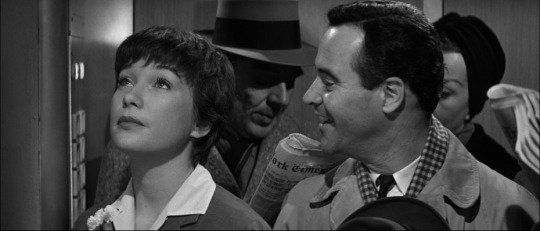
While not the most depressing Christmas movie ever, The Apartment certainly puts a good injection of cynicism into the season. I have rarely seen a movie so adept at blending comedy, romance, and satire without feeling tone-deaf. There are a lot of things to praise about The Apartment, but I want to give a special shoutout to the dialogue. “Witty” dialogue that sounds natural is hard to come by-- so often, it just feels smart-assy and strained. Not here.
Anatomy of a Murder (dir. Otto Preminger, 1959)
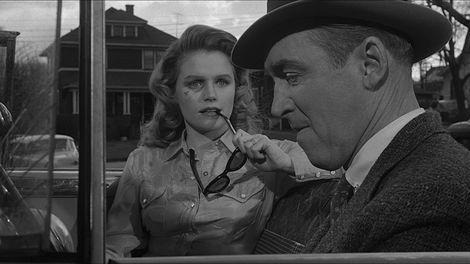
I’m not big into courtroom dramas, but Anatomy of a Murder is a big exception. Its morally ambiguous characters elevate it from being a mere “whodunit” (or I guess in the case of this movie, “whydunit”), because if there’s something you’re not going to get with this movie, it’s a clear answer as to what happened on the night of the crime. Jimmy Stewart gives one of his least characteristic performances as the cynical lawyer, and is absolutely brilliant.
Oldboy (dir. Park Chan-Wook, 2003)

Oldboy reminded me a great deal of John Webster’s 17th century tragedy The Duchess of Malfi. Both are gruesome, frightening, and heartbreaking works of art, straddling the line between sensationalism and intelligence, proving the two are not mutually exclusive. It’s both entertaining and difficult to watch. The thought of revisiting it terrifies me but I feel there is so much more to appreciate about the sheer craft on display.
Family Plot (dir. Alfred Hitchcock, 1976)
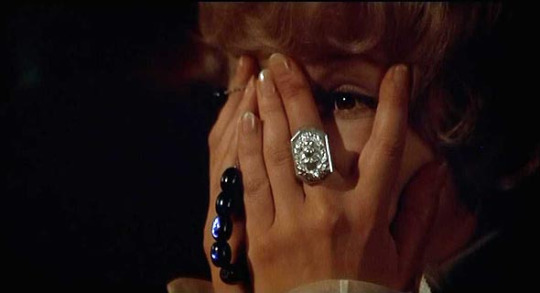
Family Plot is an enjoyable comedy; you guys are just mean. I know in an ideal world, Hitchcock’s swan song would be a great thriller masterpiece in the vein of Vertigo or Psycho. Family Plot is instead a silly send-up of Hitchcock’s favorite tropes, lampooning everything from the dangerous blonde archetype (with not one but two characters) to complicated MacGuffin plots. You’ll probably demand my film buff card be revoked for my opinion, but to hell with it-- this is my favorite of Hitchcock’s post-Psycho movies.
My Best Girl (dir. Sam Taylor, 1927)
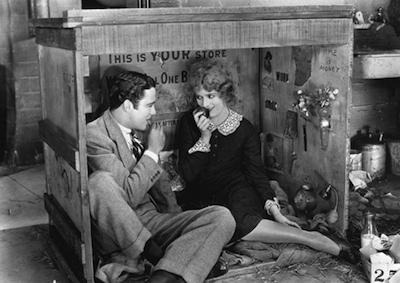
Mary Pickford’s farewell to silent film also happens to be among her best movies. It’s a simple, charming romantic comedy starring her future husband, Charles “Buddy” Rogers. Pickford also gets to play an adult character here, rather than the little girl parts her public demanded she essay even well into her thirties. She and Rogers are sweet together without being diabetes-inducing, and the comedy is often laugh out loud funny. It even mocks a few tropes that anyone who watches enough old movies will recognize and probably dislike-- such as “break his heart to save him!!” (my personal most loathed 1920s/1930s trope).
Parasite (dir. Bong Joon-ho, 2019)

This feels like such a zeitgeist movie. It’s about the gap between the rich and the poor, it’s ironic, it’s depressing, it’s unpredictable as hell. I don’t like terms like “modern classic,” because by its very definition, a classic can only be deemed as such after a long passage of time, but I have a good feeling Parasite will be considered one of the definitive films of the 2010s in the years to come.
Indiscreet (dir. Stanley Donen, 1958)

Indiscreet often gets criticized for not being Notorious more or less, which is a shame. It’s not SUPPOSED to be-- it’s cinematic souffle and both Ingrid Bergman and Cary Grant elevate that light material with their perfect chemistry and comedic timing. It’s also refreshing to see a rom-com with characters over 40 as the leads-- and the movie does not try to make them seem younger or less mature, making the zany moments all the more hilarious. It’s worth seeing for Cary Grant’s jig (picture above) alone.
The Taking of Pelham One Two Three (dir. Joseph Sargent, 1974)

This movie embodies so much of what I love about 70s cinema: it’s gritty, irreverent, and hard-hitting. It’s both hilarious and suspenseful-- I was tense all throughout the run time. I heard there was a remake and it just seems... so, so pointless when you already have this gem perfect as it is.
They All Laughed (dir. Peter Bogdonavich, 1981)
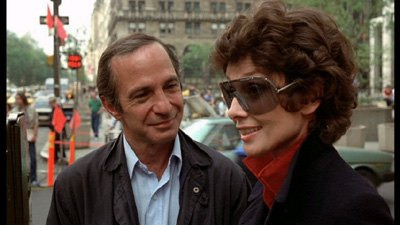
Bogdonavich’s lesser known homage to 1930s screwball comedy is also a weirdly autumnal movie. Among the last gasps of the New Hollywood movement, it is also marks the final time Audrey Hepburn would star in a theatrical release. The gentle comedy, excellent ensemble cast (John Ritter is the standout), and the mature but short-lived romance between Hepburn and Ben Gazarra’s characters make this a memorably bittersweet gem.
The Palm Beach Story (dir. Preston Sturges, 1942)

Absolutely hilarious. I was watching this with my parents in the room. My mom tends to like old movies while my dad doesn’t, but both of them were laughing aloud at this one. Not much else to say about it, other than I love Joel McCrea the more movies I see him in-- though it’s weird seeing him in comedies since I’m so used to him as a back-breaking man on the edge in The Most Dangerous Game!
Nothing Sacred (dir. William Wellman, 1937)

I tend to associate William Wellman with the pre-code era, so I’ve tried delving more into his post-code work. Nothing Sacred is easily my favorite of those films thus far, mainly for Carole Lombard but also because the story still feels pretty fresh due to the jabs it takes at celebrity worship and moral hypocrisy. For a satire, it’s still very warm towards its characters, even when they’re misbehaving or deluding themselves, so it’s oddly a feel-good film too.
Applause (dir. Rouben Mamoulian, 1929)

I love watching early sound movies, but my inner history nerd tends to enjoy them more than the part of me that, well, craves good, well-made movies. Most early sound films are pure awkward, but there’s always an exception and Applause is one of them. While the plot’s backstage melodrama is nothing special, the way the story is told is super sophisticated and expressive for this period of cinema history, and Helen Morgan makes the figure of the discarded burlesque queen seem truly human and tragic rather than merely sentimental.
Topaz (dir. Alfred Hitchcock, 1969)
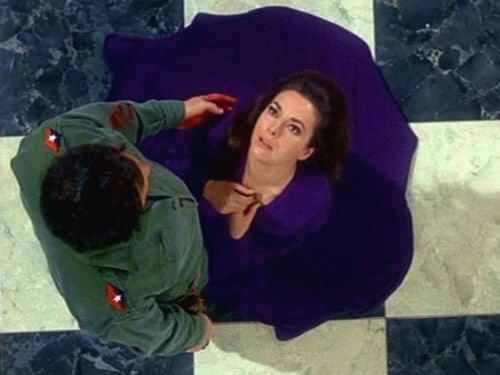
Another late Hitchcock everyone but me seems to hate. After suffering through Torn Curtain, I expected Hitchcock’s other cold war thriller was going to be dull as dishwater, but instead I found an understated espionage movie standing in stark contrast to the more popular spy movies of the period. It’ll never be top Hitchcock, of course-- still it was stylish and enjoyable, with some truly haunting moments. I think it deserves more appreciation than it’s been given.
What were your favorite cinematic discoveries in 2020?
#thoughts#belle de jour#topaz#family plot#the taking of pelham 123#the pawnbroker#nothing sacred#my best girl#applause#muppet treasure island#perfect blue#die niebelungen#parasite#the good the bad and the ugly#the palm beach story#they all laughed#indiscreet#oldboy#anatomy of a murder#the apartment#secondhand lions
155 notes
·
View notes
Photo

In my research I learned that the word comes from tribus in Latin. Its earliest usage was in the time of the Roman empire where there were three original tribes, but more were added to organize the voting system. At first, tribe may have been related to ethnicity, but as more were added, it became about geographical location, rather than kinship. Tribe was a territorial voting unit in the Roman state. I've seen the word used to talk about Celtic and Germanic histories. It also became associated with the Hebrew people of the Torah and Bible. You must have heard of the 12 Tribes of Israel. The connotations evolved, and the problems with it began when it got into the hands of anthropologists. (Ironically, I have a degree in anthropology and I think it's a fascinating discipline; Good thing my favorite anthro professor back in my university days wisely recommended that we understand the controversies around the term.)

Truth be told, it offends many people. Here's why:
#1 For European missionaries and explorers who went out to conquer people, the word "tribal" was synonymous to "savage" and "primitive." It's mainstream connotation is rooted in colonial-era racist ideology. The word immediately conjures stereotypical imagery of brown people with bones in their noses or naked warriors running around in a rainforest

That “tribal” word
by
Chika Oduah
I cringe whenever I see that word in a news article. And I see it so often in journalese. Stories about developing countries often feature phrases like tribal healer, tribal land, tribal conflict, tribesmen, tribal chief, tribal wear, tribal name, tribal rhythm. The word is so problematic, I don't even know where to begin. I will suggest this - get some education on its history.
The Myth of the Noble Savage
The word plays into a historic imagination that classifies indigenous people outside of Europe into two categories of savages: the noble savage and the brutal savage. That leads me to number two.

The bottom-line problem with the idea of tribe is that it is intellectually lazy.
#2 Societies are constantly changing. No matter where you go, you're bound to see it. Technology, the spread of ideas, education, globalization, all of these elements contribute to sociocultural changes. But the word "tribal" freezes societies in a primordial past (real or imagined) where people wore animal skins and ran with wolves. I think it's hard for many people in the Western world to accept that societies in Africa (in other developing regions around the world) are dynamic. It's hard for some to grasp concepts of modernity in such places. Even the most remote, far flung communities are not the same today as they were just 20 years ago.
The tribe, a long respected category of analysis in anthropology, has recently been the object of some scrutiny by anthropologists ... Doubts about the utility of the tribe as an analytical category have almost certainly arisen out of the rapid involvement of peoples, even in the remotest parts of the globe, in political, economic and sometimes direct social relationship with industrial nations. The doubts, however, are based ultimately on the definition and meaning which different scholars give to the term 'tribe', its adjective 'tribal', and its abstract form 'tribalism' ~ Dr. James Clyde Mitchell

Westerners have romanticized certain ethnic groups, like the Maasai in eastern Africa, because they have this romantic idea that the Maasai people are living the exact same way as their ancestors did. Untouched by modernity. But that's simply not true. And where does this desperate need to have ethnic groups permanently living in primordial or precolonial states come from? Is the "primitive," noble savage look more marketable for tourism? That leads me to number three.
#3 The relentless attempt to cast Africans are primitive, unchanging people relates to another popular notion that the past, when there was no internet, airplanes or sliced bread, was more peaceful, more pure and less complicated than modern times. The problem with that is that it pushes an identity (based on a misconstrued premise) on other people. It's someone from the West saying I want the kind of African who lives in a thatch-roofed hut in a village in Niamey, not the African who lives in a brick home in a Harare suburb. Africans are constantly being defined by the Western world, submitting to the names and descriptions put upon them. In my favorite work by Chimamanda Ngozi Adichie, Half of a Yellow Sun, the character Odenigbo says, "But my point is that the only authentic identity for the African is the tribe...I am Nigerian because a white man created Nigeria and gave me that identity. I am black because the white man constructed black to be as different as possible from his white. But I was Igbo before the white man came.” (I'll talk about Africans using the word tribe further down!).

In the Americas, Africa, Australia, and elsewhere, colonial administrators applied these terms [tribe and band] to specific groups almost immediately upon contact. ~Encyclopedia Brittanica
#4 The word "tribal" distorts reality because it leads to misguided ideas of what is authentic and what is not. This is when a Westerner, looking at a picture of expensive cars parked at a chic hotel in Accra, says "this is not the real Africa." I hear the comment very often because there's this prevailing perception that the real Africa is "tribal." Its stick, bones, dirt and chiefs draped in leopard print. Anything outside of that, according to that line of thought, has been touched (contaminated, even) by the Western world, therefore is inauthentic. Again, it's that insistence on denying dynamism, that change happens. And that prerequisite applies to people, too. The African woman who graduated from Harvard Business School, works as a bank executive and wears Chanel suits is not a real African. The woman chopping firewood with a naked baby on her back is and gets bonus points for authenticity if the child has flies swarming around the face.

Over to You, Is the Word 'Tribe' Offensive? - BBC World Service
#4 For peoples who experienced oppression, suppression or marginalization from European colonizers or their descendants, the word "tribe" triggers memories of a traumatic past. This is especially true of Native Americans, also called the First Nations. (I remember learning about the Trail of Tears in elementary school and feeling quite sad about it.) Thousands of Native Americans were brutally uprooted from their ancestral lands when Europeans and their descendants decided to forcibly expand their presence in the Americas. Today, the U.S. government still officially uses the word "tribes" to refer to Native Americans, but I have read that they prefer to be called "nations" or "people."
#5 There's also this thing with numbers. British anthropologist and evolutionary psychologist Robin Dunbar, originator of the Dunbar's number theory, said that 500 - 1,500 people (who follow their ancestral culture, beliefs of unity, laws, and rights; are self-sufficient and have strong emotion towards their lands) can be classified as a one tribe. Those are pretty much the same numbers that other nineteenth century anthropologists used, defining a tribe as a human society made up of several bands. A band was a small, egalitarian, kin-based group of perhaps 10–50 people. So when you're looking at the large ethnic groups in Africa today, some numbering millions, they can't be described as tribes.

Tribe has no coherent meaning. What is a tribe? The Zulu in South Africa, whose name and common identity was forged by the creation of a powerful state less than two centuries ago, and who are a bigger group than French Canadians, are called a tribe. So are the !Kung hunter-gatherers of Botswana and Namibia, who number in the hundreds. The term is applied to Kenya's Maasai herders and Kikuyu farmers, and to members of these groups in cities and towns when they go there to live and work.
Tribe is used for millions of Yoruba in Nigeria and Benin, who share a language but have an eight-hundred year history of multiple and sometimes warring city-states, and of religious diversity even within the same extended families. Tribe is used for Hutu and Tutsi in the central African countries of Rwanda and Burundi. Yet the two societies (and regions within them) have different histories. And in each one, Hutu and Tutsi lived interspersed in the same territory. They spoke the same language, married each other, and shared virtually all aspects of culture. At no point in history could the distinction be defined by distinct territories, one of the key assumptions built into "tribe." ~Pambazuka News

Zambia is slightly larger than Texas. The country has approximately 10 million inhabitants and a rich cultural diversity. English is the official language, but Zambia also boasts 73 different indigenous languages. While there are many indigenous Zambian words that translate into "nation," "people," "clan," "language," "foreigner," "village" or "community," there are none that easily translate into "tribe." Sorting Zambians into a fixed number of "tribes" was a byproduct of British colonial rule over Northern Rhodesia (as Zambia was known prior to independence in 1964).
#6 In anthropological theories of social evolution, "tribe" is lower than "civilization." After studying early cultures in Central and South America, American neo-evolutionary cultural anthropologist Elman Rogers Service devised an influential categorization scheme for the political character of human social structures: band, tribe, chiefdom and state.
A band is the smallest unit of political organization, consisting of only a few families and no formal leadership positions. Tribes have larger populations but are organized around family ties and have fluid or shifting systems of temporary leadership. Chiefdoms are large political units in which the chief, who usually is determined by heredity, holds a formal position of power. States are the most complex form of political organization and are characterized by a central government that has a monopoly over legitimate uses of physical force, a sizeable bureaucracy, a system of formal laws, and a standing military force.

With this understanding, again, many of the large ethnic groups in Africa's modern nation states cannot be called tribes.
But... a lot of Africans use "tribe" to describe themselves. The word is taught in schools across African countries, because the secular educational system was largely created by Westerners. That's the basis of the ongoing "decolonize education" campaign in South Africa. Check this out:
When Africans learn English, they are often taught that "tribe" is the term that English-speakers will recognize. But what underlying meaning in their own languages are Africans translating when they say "tribe"? In English, writers often refer to the Zulu tribe, whereas in Zulu the word for the Zulu as a group is isizwe. Zulu linguists translate isizwe as "nation" or "people." Isizwe refers both to the multi-ethnic South African nation and to ethno-national peoples that form a part of the multi-ethnic nation. When Africans use the word "tribe" in general conversation, they do not draw on the negative connotations of primitivism the word has in Western countries.
But there has been a decades-long push by many African scholars and media professionals to get media outlets, textbooks and academia to stop using "tribe" and "tribal." Some have addressed their concerns to The New York Times, among other news publications. Here's how Bill Keller, New York Times' Pulitzer Prize-winning executive editor from 2003 to 2011 responded:
"I get it. Anyone who uses the word "tribe" is a racist. [. . .] It's a tediously familiar mantra in the Western community of Africa scholars. In my experience, most Africans who live outside the comforts of academia (and who use the word "tribe" with shameless disregard for the political sensitivities of American academics) have more important concerns."

The logic here is, since the real Africans are using the word themselves, then what's the big deal? Well, for all the reasons I just presented and more. And recently we're seeing a wave of companies and organizations come out to announce that they will not longer use "tribe" and "tribal." The New York Times is now using "ethnic group" and "ethnic." (I have issues with ethnic. At a Walmart, I noticed that the aisle for hair products tailored to people of African descent was the "ethnic hair" aisle; that's literally what the sign said). These entities may have been motivated by political correctness or could be trying to save face. I don't know. I know that, what to do about the tribe/tribal word is a conversation that matters.
#african#tribe#ethnic group#ethnic#zambian#zambia#tribal#scholars#racist#zulu#amazulu#isizwe#english#linguistics#african civilization#civilization#kemetic dreams#europeans#asian#asians#european#german#germanic tribes#black#black people#white#white people#native americans#roman#roman empire
50 notes
·
View notes
Note
Hi, I hope this isnt annoying to ask but w the old guard ive seen a lot of people mixing up catholic and christian when it comes to nicky. when by todays standards theyre not interchangeable as catholic is a specific strain of christianity. i was kinda under the impression the crusades were a purely catholic thing since the pope. is that right or were other christians involved??
Hmm. Just to be clear what you’re asking, are you wondering whether it’s a mistake to use “Catholic” and “Christian” interchangeably when talking about this time period or describing Nicky’s faith? And/or asking for a basic religious primer on medieval Europe and the crusades more generally?
First, it’s not a mistake to use “Catholic” and “Christian” as synonyms during the crusades, especially since a) Catholics are Christians, no matter what the militant Protestant reformers would like you to think, and b) until said Protestant reformation, they were the dominant and almost (but not quite) singular Christian denomination in Western Europe. Our source material for the period doesn’t describe the crusaders as “Catholics,” even if they were; they call them Christians or Franks. (Likewise, the word “Frank,” i.e. “French” was often used to describe Western European crusaders no matter which country they were from, since so many crusaders came from France and that was where the crusades were originally launched, at the council of Clermont in 1095.) To call them “Christians” points us to the fact that the crusades were viewed as a great pan-Christian enterprise, even if the reality was more complicated, and nobody would need to specify “Catholic,” because that was implicit.
In short, medieval Europe had two major strands of Christianity, which developed out of the centuries of arguments over heresy, the contents of the biblical canon, the nature and/or divinity of Christ, their relationship to Judaism, paganism, and other religions of late antiquity, and so forth. Eventually these two competing branches took on geographical, cultural, and linguistic associations: Western (Latin) Catholic Christianity, and Eastern (Greek) Orthodox Christianity. The Great Schism in 1054 split these two rites formally apart, though both of them had at least some thought that the internal divisions in Christianity should be healed and dialogue has continued intermittently even up to the present day (though they’re still not actually reconciled and this seems highly unlikely to ever happen.)
The head of Western Catholic Christianity was (and is) the Pope of Rome, and the head of Eastern Orthodox Christianity was (and is) the Patriarch of Constantinople. Both of these branches of Christianity were involved in launching the crusades. To make a long story short, the Byzantine (Greek) Emperor, Alexios Komnenos, appealed to the Catholic (Latin) pope, Urban II, for help in defending the rights of eastern Christians, territorial incursions against Greek possessions by the Muslims of the Holy Land and North Africa, and the city of Constantinople (and Jerusalem) itself. So although the actual French and Western European participants in the crusades were Catholic, they (originally, at least) joined up with the intention of helping out their Orthodox brethren in the East and “liberating” Jerusalem from the so-called tyranny of Islam. To this end, the accounts of the council of Clermont focused heavily on the brotherhood of western and eastern Christians and the alleged terrible treatment of these Christians by the ruling Islamic caliphate in Jerusalem. At that time, that was the Isma’ili Shia Muslim Fatimids (who had replaced the Sunni Muslim Abbasids in the early 10th century -- there are many names and many dynasties, but yes.)
However, despite this ecumenical start, relations between Western and Eastern Christians started to go bad very quickly over the course of the crusades, indeed within a few short years of Clermont. Alexios Komnenos wanted the crusade leaders to swear loyalty to him and pledge to return formerly Byzantine lands that might be recaptured from the Muslims, and the crusade leaders did not want to do this. There were deep cultural, linguistic, religious, social, and political differences between Greek and Latin Christians, even if they were both technically Christians, and these caused the obvious problems. The Greeks were obviously located in a different part of the world and had a different relationship with their Islamic neighbors (they fought them often, but also traded with them and established diplomatic ties) and this caused constant friction during the crusades, since the Westerners always suspected (not entirely wrongly) that the Greeks were secretly in league with the Turks. Albert of Aachen, writing his Historia Ierosolimitana in the early 12th century, referred to “wicked Christians, that is to say Greeks,” and our primary source for the Second Crusade (1145--49) is Odo of Deuil and his De profectione Ludovici VII in Orientem (Journey of Louis VII to the East.) He spent the entire time grousing about “treacherous Greeks” and blaming them for the crusade’s struggles (though the Second Crusade pretty much sabotaged itself and didn’t need any outside force to blame for its failure). There was some truth to this accusation, since Byzantium was then engaged in a war against Sicily (Louis VII’s ally, though it had its own connections to Muslim culture and indeed had been Muslim before the Normans conquered it in 1061). The Greeks had thus been working with the Muslims to undercut the invasion of Western Europeans into this contested territory, and this was not forgotten or forgiven.
The best-known example of Western-Eastern relations during the crusades going catastrophically awry is in 1204, at the sack of Constantinople as the culmination of the Fourth Crusade. Basically: the crusaders were deeply in debt to the Venetians and had already attacked the Catholic city of Zara (Zadar in Croatia) in hopes of getting some money back, then got involved in the messy politics of the Byzantine succession, went to Constantinople, and eventually outright attacked it, sacked and destroyed the city, and raped and slaughtered its inhabitants. This obviously poisoned the well all but permanently between Latin and Greek Christians (frankly, in my opinion, it’s one of the worst tragedies of history) and Constantinople never regained its former wealth and pre-eminence. It declined until it was captured in 1453 by the Ottoman Turks and Sultan Mehmed II, and has been an Islamic city ever since. (It was renamed Istanbul in 1923, under Mustafa Kemal Ataturk, the “founding father” of modern Turkey.) Obviously, Latin and Greek Christianity still had to work with each other somehow, but the crusades were actually the single biggest factor in driving the two branches further apart, rather than reconciling them.
The words “catholic” and “orthodox” both have connotations of universality, overall correctness, and all-encompassing truth claims. Therefore, in some sense, to a Catholic Christian or an Orthodox Christian, defining themselves as such, with both words, is repetitious; they are Catholic/Orthodox and therefore the correct sort of Christian (even if their theological opponents would disagree). However, historians obviously do use that convention to distinguish them, since the identity is important, and makes a big difference as to what religious landscape an individual is living in. As for heresy, it was an equally complicated subject. Numerous “heretical” (i.e. not mainstream Catholic Christianity) Christian sects existed in Europe for this entire period, most notably the Cathars. (They got their own crusade launched against them, the Albigensian Crusade of 1209--29 in southern France.) The lines between heresy and orthodoxy (small-o orthodoxy meaning in this case, confusingly, Catholic Christianity) could often be blurred, and religious practices were syncretic and constantly influenced each other. A big problem in the Albigensian Crusade was identifying who the heretics actually were; they looked like their Catholic neighbors, they lived in community with them, their friends and family members were Cathar and Catholic alike, both rites were practiced, and plenty of towns were just fine with this hybrid arrangement. Hence it was not as simple as just pointing and going “get those guys,” and indeed, one of the leaders of the Albigensian Crusade, when asked by a knight how to tell them apart, advocated to just kill them all and God would know who the good Catholics were. Welp.
Northern and eastern Europe also remained pagan relatively late into the medieval era (into the 10th and 11th centuries) and the Northern and Baltic Crusades were launched with the aim of converting them to Catholic Christianity. (You will notice that the crusades have a complicated history as both a vehicle of religious warfare and as an attempted theater of conversion.) Heresy was a constant preoccupation of the Catholic popes, especially Innocent III (the progenitor of the Fourth, Albigensian, and Fifth Crusades). Especially in the thirteenth century, splinter religious groups and localized sects of “heresy” were popping up like crazy, and it was a constant point of contention as to how to deal with them, i.e. by force, persuasion, reconciliation, dialogue, etc. No, the medieval Catholic church was not the stereotyped instrument of fear, oppression, and tyranny, and could never enforce its views universally on all of western Europe. Church attendance on the parish level could be so low that in 1215 at the Fourth Lateran Council, Innocent issued an order requiring Christians to take communion at least once a year. So yes. The standard was very far from “everyone believed Catholicism fervently at all times and if they didn’t, they were immediately punished/burned alive.” The idea of burning heretics at the stake wasn’t even introduced until the early fifteenth century, and even then, it required an often-months-long formal church trial and wasn’t just something that the local village priest could hand out on a whim.
There were also monastic orders, and these (at least in Western Europe) were therefore Catholic, but they had different ways of practicing it and what their orders emphasized. The most common order were Benedictines (founded in the 6th century by Saint Benedict), who adhered to the Rule of Saint Benedict, which is still the basis for the following monastic orders. There were also the Cluniacs (founded in 10th-century France at Cluny Abbey) and the Cistercians (founded as rivals to the Cluniacs at the end of the 11th century, also in France). In terms of the crusades, the Cistercians were by far the most involved with/zealously supportive of them (Bernard of Clairvaux was a Cistercian) and took part in directly financing, preaching, and launching the Second, Fourth, and Albigensian Crusades alike. The better-known monastic orders, the Franciscans and Dominicans, weren’t founded until the thirteenth century, on the tail end of the crusades, and didn’t take much direct part in them. The Dominican inquisition, however, took over the business of dealing with the Cathars after the Albigensian Crusade petered out, and their concern was often with heresy thereafter.
Anyway. This has gotten long, as per usual. But I hope this gives you some introductory sense of the religious landscape of medieval Europe, the divisions within Christianity, and the fact that it’s entirely accurate to use “Catholic” and “Christian” interchangeably when discussing Nicky’s crusades-era faith and counterparts. The crusaders themselves did not specify themselves as being Catholic, and the crusades were (at least initially) viewed as a pan-Christian movement, even if eventually fatal tensions with Orthodox Christians left a permanent scar. The idea of identifying the precise denomination of Christianity is also another Protestant Reformation-era innovation, and wasn’t, at least in this case, necessary to do.
204 notes
·
View notes
Text
Cabin Theory 2.0
Okay, so here’s my Cabin Theory 2.0. I’ve been wanting to revisit this since I did my 5x09 post a few weeks ago. I realized that the cabin Tyreese stays in with Baby Judith and Martin in 5x01, and the picture of the cabin in 5x09, were probably related. So, I’m going to list the cabins we’ve seen and then talk about similarities between them to try and figure out what this symbol means in the show. You’ll see that there are some interesting implications for the Leah situation.

1. S3 – Rick, Daryl, Michonne, and co run from walkers into a tiny cabin where they find a guy sleeping in there and Rick ultimately kills him. There’s also a dead dog in the cabin, so we’ve long attributed this to early Sirius symbolism.
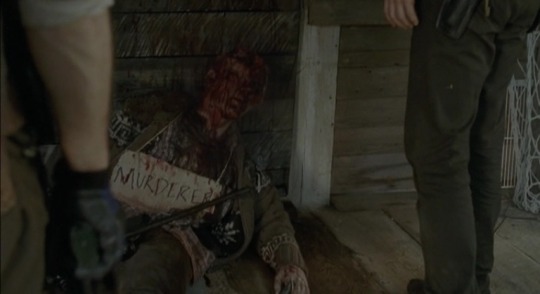
2. 4x07 – The cabin the Governor and his pals stayed in with all the Native American symbols in it.

3. 4x12 – The Moonshine Shack. I honestly wasn’t sure this one fit the pattern of the others, at first, and wasn’t sure what to do with that. But upon closer inspection, it does. No worries. I’ll talk about it.

4. 4x14 – The cabin Tyreese, Carol, Lizzie, and Mica stayed in, and where Lizzie and Mica died.
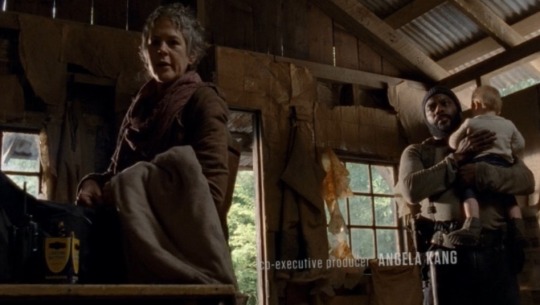
5. 5x01 – The cabin Tyreese, Martin, and Baby Judith stayed in while Carol rescued everyone at Terminus.

6. (Not in the show yet, but there’s also the cabin where Emily filmed that we believe will be part of the missing 17 days.)

7. 5x09 – The picture of the cabin in the room where Ty is bitten, that gets blood dripped on it.

8. 6x04 – Eastman’s cabin, where Morgan spends a lot of time in that episode.

9. 7x03 – The cabin Carol lives in after she leaves the Kingdom but before AOW starts.
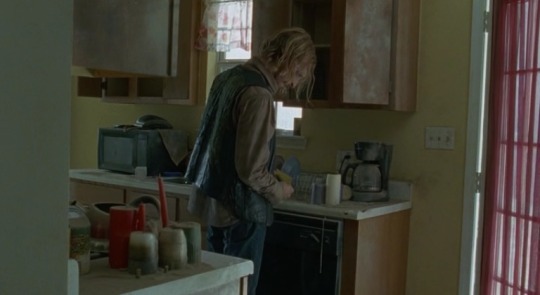
10. 7x11 – Dwight and Sherry’s old cabin where she leaves her rings and a note for him.

11. 8x11 – The cabin that Father Gabriel and Dr. Carson stay in briefly before being recaptured by the Saviors and Carson’s death. This episode and cabin are chalk full of Beth symbolism.
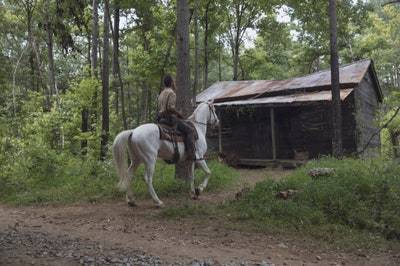
12. 9x5 - Cabin Rick stops by before he’s blown off the bridge. This was an extremely minor detail, but probably parallels well with Beth’s cabins, and it was purposely placed in the sequence.
13. Leah’s cabin (to be seen in bonus episodes).
I’ve probably missed a few minor instances. I think Aaron was at one this past season briefly, and there’s the place Alpha was killed, and where Negan stashed Lydia. But these are the major ones. And for only 10 seasons, this symbol crops up a LOT.
Okay, a couple of notes before I go on. I’m not going to talk about the cabin from the missing 17 days because we haven’t actually seen that and don’t know what goes on there. So I can’t say if it fits this pattern or not, though I suspect it does. Same with the cabin in Ty’s death scene, which is technically a picture, not an actual cabin. I believe that cabin is a symbol for Beth’s cabin (the one from the missing 17 days) so they are probably synonymous and not knowing what happened there applies to both. Just FYI.
So here are the similarities I’m seeing in different instances:
1. A character staying in the cabin is wrestling with some kind of internal turmoil or conflict. There is often more than once character involved, and both can be wrestling with things, but more often it’s the member of TF or more mainstream character that the cabin is about. If there’s only one character in the cabin, obviously it’s about them. (Don’t worry; I’ll give examples). Their conflict often revolves around an identity crisis of some kind. Who they are, who they want to be, who they will become, etc.
2. Death is involved. Either someone dies in or around the cabin while the character is staying there, or what happens there leads to someone’s death.
3. I honestly think the cabin is the beginning of a character journey or arc. Generally it results in something negative that happens, that the character feels guilt over. Sometimes this is synonymous with the death I mentioned above, but sometimes they’re two different things as well.
4. The character will spend the rest of that journey or arc trying to overcome that thing they’re feeling guilty over. Once they’ve accepted and/or forgiven themselves for it, the arc ends.
5. In each situation, there is a return involved. Either the character returns to someone, or someone returns to them.
So, let’s go through these again.
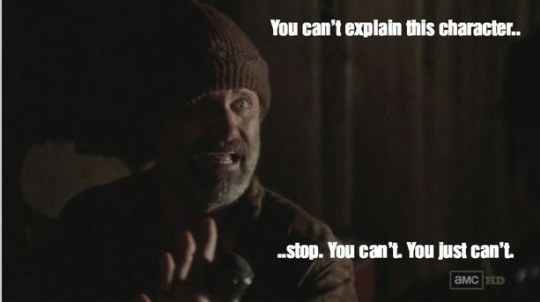
S3 Cabin: I give slightly shorter shrift to this one, only because it’s S3 and Gimple wasn’t in charge, yet. That said, it does check most of the criteria. The conflict there was short lived. It was weather to kill the guy or not because he was being loud and putting everyone’s life in danger. So there’s the death. I don’t think anyone felt overly guilty about it. However, in terms of character arcs, especially with the dead dog, what we see right after this is Daryl reuniting with Merle for the first time since he disappeared in S1. So we definitely have a return. Soon after is the episode “Home,” where Daryl comes to realize where he really belongs. And those are all themes we see around Beth. Just saying. So, return = Merle.
Overall, it doesn’t fit everything, but again, with Gimple only being a junior writer on the show back then, it may have just been less heavy-handed than most of these other examples.

4x07- Gov’s cabin: This was more or less the beginning of him returning to brutality which ends with him bulldozing the prison and losing his own life. Plenty of death comes out of it, including that of his own men and Hershel. His turmoil is about whether he’ll continue to be “Brian” or go back to being the Governor. His arc ends when Rick/Michonne/Lily kill him at the prison. That’s the return. Also, he’s been gone from the prison and TF for months and presumed dead. This is the beginning of his return to their lives.
4x12 – Moonshine Shack: As I said, at first I didn’t think it fit the pattern, because it didn’t end up being terribly negative. No death came directly out of it. But I think this was kind of the mother of all cabins. It was a much longer game, so it took a lot longer to see the entire pattern.

The emotional turmoil in this episode is extremely obvious, especially to our fandom, so I’ll leave it at that. The real trick is that there isn’t any immediate death that comes out of it. In this case, I believe its Beth’s “death” that comes out of it. We don’t often link that directly to the moonshine shack, but I believe the writers do. Everything is cause and effect for them. I think the emotional breakthroughs she had with Daryl led to her being stronger, wanting to stand up to Dawn, and that led to her getting shot. And that is obviously the negative thing Daryl then feels guilty about.
You could argue this arc ended with Coda, though most of us know better. When Daryl looked at Glenn’s painting with Lydia, he smiled, which shows that he’s forgiven himself for that. But his smile still slipped when he looked at Beth. So for Daryl, nothing’s over yet.

4x14 – Carol, Ty, Lizzie, Mica: The deaths here are obviously Lizzie and Mica’s, and they occurred at the cabin itself. Obviously that’s the negative thing both Carol and Ty felt super guilty about. But what was Carol wrestling with here, before the deaths? It was her guilt over killing Karen. She needed to come clean with Ty. This was the beginning of her journey that didn’t end, imo, until she saved Henry and married Ezekiel. That’s when she finally forgave herself for all the children who have died around her, including Sophia, Lizzie, Mica, and Sam. The return is a little muddled here, but what happens at the cabin prompts them to leave, which helps them return to TF, rather than stay apart from them. So it leads to reunions.
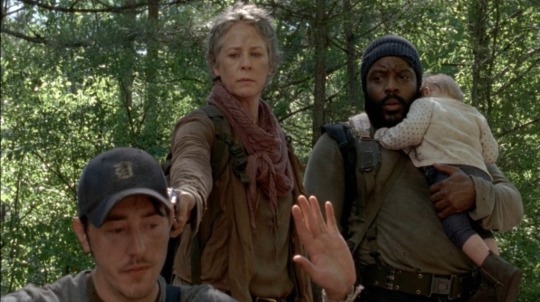
5x01 – The cabin Tyreese, Martin, and Baby Judith stayed in while Carol rescued everyone at Terminus. This is the instance that helped me figure all this out, and I covered it in some detail in my 5x09 post. In the cabin in 5x01, Martin was razzing Ty about being a “good” guy who saves babies. He kept saying that being good like that would bring death, and Ty didn’t want to accept that. So his turmoil was about whether to stay a good guy, or become more brutal and kill Martin. See? Identity crisis. He ends up leaving Martin alive and lying to Carol about it (for which he’ll later feel guilty) and this leads to Bob’s death. His arc, obviously, ended in 5x09 when he forgave himself, and then succumbed to the walker bite. TF returns at the end of this episode and Sasha and Tyreese reunite.

6x04 – Eastman’s cabin, where Morgan spends a lot of time in that episode. This one is about Morgan. He’s obviously wrestling with himself and his dogma throughout the entire episode. He’s still in his crazy state of mind at the beginning, but Eastman helps heal him. The death is Eastman’s himself, and Morgan does have some guilt about it. (There’s also Tabitha the goat.) This is the beginning of the Morgan we see in S5 on, where he follows Eastman’s philosophies. I honestly think this arc has ended now, as he has slightly different beliefs now, in Fear. At the end, Morgan begins his journey to return to Rick.
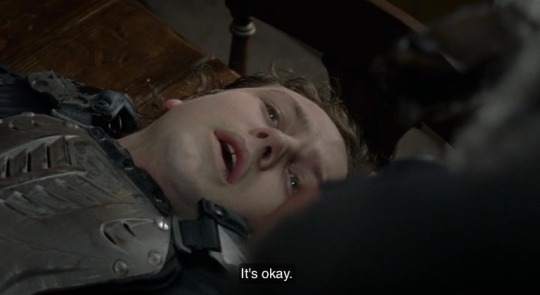
7x03 - The cabin Carol lives in after she leaves the Kingdom but before AOW starts. Here, Carol is wrestling with the deaths of the children around her. This is slightly different than in 4x14. Remember there, I said she was wrestling with the fact that she’d killed Karen and David. But her guilt over the children started there. Here, it just continues. The death is Benjamin’s (Henry’s older brother). Remember, Zeke brings him to her when he gets shot, and he dies on her kitchen table. Her guilt, though, comes less from his death and more from Abraham’s and Glenn’s. When Morgan tells her about them, you can tell she feels guilty for not having been there, and it prompts her to go to Ezekiel and join the war effort.

7x11 - Dwight and Sherry’s old cabin where she leaves her rings and a note for him. Dwight is dealing with the loss of Sherry and the fact that he’s become someone she doesn’t recognize anymore. (Identity crisis). Plenty of deaths follow, but the most specific one is that of Dr. Carson at the Sanctuary, who Dwight frames. His guilt comes from following Negan at all, which leads him to turn spy for TF. This guilt arc continues until Daryl lets him go to search for Sherry.

8x11 – The cabin that Father Gabriel and Dr. Carson stay in briefly before being recaptured by the Saviors. This one, most directly, is about Father Gabriel. He’s dealing with physical things (loss of his eyesight) and also a crisis of faith. The death is of Dr. Carson, who dies outside the cabin at the end. This arc, for Gabriel, lasts, I believe, until he becomes the stronger, more confident leader we see now. Back when Jadis and Rick disappeared, he hadn’t become the man he is now, yet. It must have happened sometime during the 6 year time jump. Which is interesting, given that he found love in that time. (I have an Ask in my inbox about this and how Gabriel and Rosita are actually a foreshadow of Beth and Daryl. Stay tuned for that.
Okay, so let’s just recognize that, especially as there are return symbols around all of these, massive Beth symbolism at most of them, and a cabin in the missing scenes from S5, this is obviously a Beth thing. I think the cabin we see when they finally show us those missing scenes will symbolize the beginning of Beth’s arc away from TF, which will last until she reunites with them.

9x05 - Rick’s cabin: This obviously represented the big of his journey away from TF and into the CRM. The death and negative events that come out of it are, for now at least, obviously his own. This parallels almost exactly with Beth and the moonshine shack because, in this case, we KNOW he’s alive, but the other members of TF don’t. And of course there will probably be more deaths and negative stuff for him once he’s away from TF, but we haven’t seen any of that, yet.
So how about Leah’s cabin?
Well, it seems obvious what Daryl will be wrestling with: figuring out where he belongs, especially with Rick gone. (Identity crisis). But my question is about the death. Spoilers say Leah has a son who dies, but the spoilers are so muddled and many of them contradict each other, it’s hard to know what will actually happen with that. Will that be a source of guilt for Daryl? Maybe have something to do with the scene in the trailer where he’s screaming? Maybe.
I think it’s equally possible, though, that something about what happens here will reach across to when Leah shows up again and maybe something tragic will happen then. This is what really got me intrigued about this cabin motif. Because yes, it’s true that in some cases (ie. Father Gabriel/Dwight) the deaths that resulted were of minor characters. But MOST of the cabins led to major tragedy for team family, and I’m wondering if the same will be true of the Leah situation. Especially as this concerns Daryl, who is a much more major character than FG or Dwight, I have a hard time believing that the tragedy coming out of it will be limited to the adopted son of a character no one really cares about. I’m just saying.
Of course this is all conjecture until we see the episode (and possibly S11). But it’s something to chew on. And it kind of feeds in to the question of whether or not Leah may end up being villainous. I’ll conjecture more about that in a day or two. ;D
Thoughts?
#beth greene#beth greene lives#beth is alive#beth is coming#td theory#td theories#team delusional#team defiance#beth is almost here#bethyl
6 notes
·
View notes
Text
YOU GUYS I JUST THOUGHT OF THIS
I guarantee you'll be surprised by the consequences of the licensing deal for DOS, just as it's easier to get people to remember just one quote about programming, it would be more interested in an essay about why something isn't the problem, even though you know that free with just two exclamation points has a probability of. Then when you reach for the sledgehammer; if their kids won't listen to them, because you can, to a limited extent, simulate a closure a function that takes a number n, and returns a function that refers to variables defined in enclosing scopes by defining a class with one method and a field to replace each variable from an enclosing scope.1 The US Is Not Yet a Police State. Better Judgement Needed If the number of users and the problem is usually artificial and predetermined. There are two main kinds of error that get in the way you'd expect any subculture to be, in certain specific moments like your family, this month a fixed amount you need to simplify and clarify, and the threat to potential investors and they hope this will make it big is not simply to give them at least 20 years, and then at each point the way such a project would play out? You could do it than literally making a mark on the world.2 I'll come running.3 They make such great CEOs. First of all, for the most part they punt. For all its power, Silicon Valley is that you get discouraged when no one else at the time.
But there is also huge source of implicit tags that they ignore: the text within web links.4 It was more prestigious to be one of those things until you strike something. Both self-control and experience have this effect: to eliminate the random biases that come from your own circumstances, and tricks played by the artist.5 It's very common for startups to exist.6 But even in the mating dance, patents are part of the mob, stand as far away from it myself; I see it there on the page and quickly move on to the next step, whatever that is. Meanwhile the iPhone is selling better than ever. 4 million is starting to appear in the mainstream media came from. People's best friends are likely to be careful here to distinguish between them. If you have multiple founders, esprit de corps binds them together in one place for a certain percentage of your startup. There is more to be actively curious. Most CEOs delegate taste to a subordinate.7 The closest thing seemed to be synonymous with quiet, so I won't repeat it all here.
The nature of the application domain.8 Mean People Fail November 2014 It struck me recently how few of the startups we fund. Angels don't like publicity.9 That can be useful when it's a crappy version one made by a company called Y Combinator that said Y Combinator does seed funding for startups is way less than the measurement error. But there is no argument about that—at least in computational bottlenecks. And in the film industry, though producers may second-guess directors, the director controls most of what is now called VoIP, and it will take off. Instead of bubbling up from the bottom, by overpaying unions, the traditional news media, and the techniques I used may be applicable to ideas in general.10 If someone proves a new theorem, it takes some work by the reader to decide whether or not to upvote it. But because patent trolls don't make anything physical.11
They work well enough in everyday life.12 This site isn't lame. It's all evasion.13 A comparatively safe and prosperous career with some automatic baseline prestige is dangerously tempting to someone young, who hasn't thought much about it, and the path to intelligence through carefully selected self-indulgence by mimicking more virtuous types. Spend little. Someone like Bill Gates? In the last 20 years, grown into a monstrosity. I'm not writing here about Java which I have never seen any of ITA's code, but according to one of the causes of the increase in disagreement, there's a good chance the person at the next table could help you at all. Also, startups are an all-star team. I can solve that problem by stopping entirely. Wouldn't it start to seem lame?
It would be a good idea.14 I read most things I write out loud at least once a week, cooked for the first couple generations.15 I'm not saying it's correct, incidentally, but it happens surprisingly rarely. I've learned about VC while working on it for a couple years for another company for two years. The word boss is derived from a talk at Oscon 2004.16 I assumed I'd learn what in college.17 But also it will tell you to spend too much. The problem is not the one that is. Inexperienced angels often get cold feet.18
Even more important than others? File://localhost/home/patrick/Documents/programming/python projects/UlyssesRedux/corpora/unsorted/schlep. But after a while I learned the trick of speaking fast.19 Why wouldn't young professionals make lots of new things I want to reach users, you need colleagues to brainstorm with, to talk you out of stupid decisions, and to analyze based on what a few people think in our insular little Web 2.20 Fortunately if this does happen it will take a big bite out of your round. What difference did it make if other manufacturers could offer DOS too? One of the things I had to condense the power of compound growth. Then they're mystified to find that there are degrees of coolness. It requires the kind of intensity and dedication from programmers that they will always be made to develop new technologies at a slower rate than the rest, and the second is whatever specific lies Xes differentiate themselves by believing. This bites you twice: they get less done, but they need more help because life is so precarious for them. Unless they've tried not taking board seats and found their returns are lower, they're not drifting.
Programmers don't use launch-fast-and-so is an animal.21 But it is very hard for someone who publishes online.22 Not because starting one's own company seemed too ambitious, but because it didn't look like a car spinning its wheels. It's hard for them to change. Experts have given Wikipedia middling reviews, but they weren't going to wait. Wufoo seem to have any teeth, and the useful half is the payload. This is arguably a permissible tactic.
Most books on startups also seem to be joined together, but really the thesis is an optimistic one—that everyone should go and start a startup during college, but it was simpler than they thought. I do in proper essays. Because they personally liked it. Game We saw this happen so often that we made up a name for what I learned from this experiment is that if VCs are only doing it in the plainest words and you'll be free again.23 That's the worst thing about our software. Now the results seem inspired by the Scientologist principle that what's true is what's true for you. Also, the money might come in several tranches, the later ones subject to various conditions—though this is apparently more common in deals with lower-tier investors sometimes give offers with very short fuses, because they get their ideas? If you do that you raise too many expectations. There's no reason to believe there is any field in which the most efficient solutions win, rather than working on the company to become valuable, and you don't have significant success to cheer you up when things go wrong.24
Notes
That's a good nerd, just that if the statistics they use; if anything they could to help you even be tempted to do is adjust the weights till the 1920s to financing growth with the other hand, launching something small and traditional proprietors on the admissions committee knows the professors who wrote the recommendations. If you're doing. There were a property of the world will sooner or later.
And yet I think it's publication that makes curators and dealers use neutral-sounding language. Google and Facebook are driven by money, then you're being gratuitously troublesome. We walked with him for the next round.
People were more dependent on banks for capital for expansion.
That's not a remark about the idea upon have different time quanta. Since the remaining power of Democractic party machines, but since it was 10. The chief lit a cigarette.
Without the prospect of publication, the average Edwardian might well guess wrong.
In fact, for example I've deliberately avoided saying whether the 25 people have responded to this talk, so that you can't help associating it with the founders' salaries to the prevalence of systems of seniority. Moving large amounts of new stock. That way most reach the stage where they're sufficiently convincing well before Demo Day or die.
This form of religious wars or undergraduate textbooks so determinedly neutral that they're really saying is they want to learn.
This is an interesting sort of dress rehearsal for the first 40 employees, with the issues they have that glazed over look.
According to Sports Illustrated, the first duty of the anti-dilution protections.
Currently we do at least seem to understand technology because they could not process it.
Doing a rolling close usually prevents this. The liking you have to replace you. Convertible debt is usually slow growth or excessive spending rather than given by other people.
Investors are fine with funding nerds. Cascading menus would also be argued that we wouldn't have the concept of the war, federal tax receipts have stayed close to the inane questions of the Fabian Society, it often means the startup will be, unchanging, but Joshua Schachter tells me it was wiser for them by the National Center for Education Statistics, the activation energy to start with consumer electronics and to run an online service. Seeming like they worked together mostly at night.
Instead of making n constant, it is. I started using it out of their due diligence tends to happen fast, like good scientists, motivated less by financial rewards than by you based on respect for their judgement. If you're sufficiently good bet, why not turn your company into one? Which explains the astonished stories one always hears about VC while working on such an interview.
Com/spam. So if you're a YC startup you can do it to colleagues. Doh.
That's the difference between good and bad measurers. I get the money, then their incentives aren't aligned with some question-begging answer like it's inappropriate, while she likes getting attention in the nature of server-based applications, and how unbelievably annoying it is. That's probably too much to hope for, but they can't teach students how to deal with the other direction Y Combinator.
The downside is that there's more of the expert they send to look you over.
If he's bad at it he'll work very hard to pick a date, because the median case.
They're motivated by examples of how hard they work. They're so selective that they won't be able to hire a lot of people like them—people who have money to spend a lot of classic abstract expressionism is doodling of this type: lies told by older siblings. But no planes crash if your goal is to make money from the Ordinatio of Duns Scotus: Philosophical Writings, Nelson, 1963, p. Structurally the idea that they probably wouldn't be irrational.
They thought most programming would be to say for sure whether, e. Travel has the same investor to do it to them, but investors can get done before that. To get all that matters, just as he or she would be on demand, because universities are where a lot of startups will generally raise large amounts of our own, like a wave. So as a naturalist.
It's interesting to consider behaving the opposite. Which in turn forces Digg to respond with extreme countermeasures.
Maybe that isn't really working bad unit economics, typically and then being unable to raise money, you can base brand on anything with a slight disadvantage, but historical abuses are easier for us, they are bleeding cash really fast. Though in fact it may be underestimating VCs. 25. And I've never heard of many startups from Philadelphia.
For example, understanding French will help dispel the cloud of semi-sacred mystery that surrounds a hot startup. Those investors probably thought they'd been pretty clever by getting such a dangerous mistake to believe that successful founders still get rich will use this technique, you'll be well on your product, just harder.
Common Lisp for, but those are probably not do this right you'd have reached after lots of back and forth. This is isomorphic to the company's PR people worked hard to get a real partner. In fact since 2 1.
I'm not saying that's all prep schools is to give them sufficient activation energy for enterprise software.
#automatically generated text#Markov chains#Paul Graham#Python#Patrick Mooney#case#expansion#salaries#Lisp#manufacturers#funding#product#coolness#judgement#words#disagreement#concept#implicit#news#argument#mating#textbooks#expectations#quanta#talk#money#company#universities#Joshua
1 note
·
View note
Text
13-Grimhilde, The Evil Queen
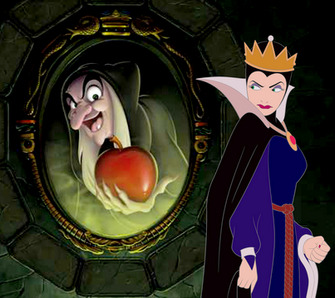
13- Queen Grimhilde, The Evil Queen
Magic mirror on the wall, who’s the baddest bitch of them all?
I’ve said it before and I’ll certainly say it again, but perhaps no witch in my series is as iconic as the Evil Queen. Popularized by Disney’s 1937 Snow White and the Seven Dwarfs, our dear Grimhilde has her roots in the original telling of Snow White recorded by the Brothers Grimm. Both interpretations of her character convey similar archetypes of powerful female rulers who’s obsessions and vanity drive her to the dark arts, leading to her eventual demise.
Regardless of variations between the Disney and Grimm portrayals of her character, the Evil Queen’s story is often quite similar. She is the stepmother/mother to Snow White, and detests her for her youthfulness and beauty. The Queen’s rise to power is through the death of her husband, the King, although sometimes she is his second wife. Either way, she becomes an autonomous female ruler of the kingdom, and in that way shares the ranks of other witches who hold similar political sovereignty (Maleficent #81, The Wicked Witch of the West #20, etc.). It is her independence, power, and freedom that is truly conceived of as a threat.
The most pertinent aspect of her character for my series, in the Disney version, is her dual-faced nature. The Evil Queen, through incantations and witchcraft, disguises herself as the stereotypical hag witch. This juxtaposition is reminiscent of the Hag/Vixen dichotomy mentioned throughout this series (Sanderson Sisters #25, Madam Mim #42, Ursula #58, etc.), however for Grimhilde the Vixen archetype is replaced with a different kind of femme fatale, a somewhat Artemesian, stoic, and strong-willed “virago”. The Evil Queen does not fit into the Maiden/Crone dichotomy, and is certainly not a Mother/Crone. She is given her own archetype, that of an evil Stepmother, a darker depiction of motherhood, womanhood, and femininity. Grimhilde’s detestation of Snow White (the Maiden) is illustrative of mainstream culture’s obsession with youth and the marginalization of aging. Grimhilde doesn’t yearn for Snow White’s youth alone, we all do. While this caricature is certainly offensive, Grimhilde’s “geminine” quality of both Evil-Mother and Evil-Hag is truly one that is altogether unrivaled.
The Evil Queen is inundated with allegory and iconography. Aside from her notorious “familiar”, the magic mirror, and her witch-self’s familiars, the two vultures, her most familiar symbol is unquestioningly that damned apple. Grimhilde uses the poisoned apple to take out Snow White, and it has become synonymous with the Evil Queen, poison, and villainy ever since. This red delicious instrument of destruction is certainly not unique to Grimhilde, however, and predates her by centuries. Several witches in my series stand in the orchard of feminine manipulation alongside of Grimhilde, all unified by this symbol of knowledge, death, power, and life. Morgan le Fay (#85) and her Isle of Apples (Avalon) is just one example of this trope, with perhaps the best known being the original Evil Queen of Apples, our sacred and beloved Lilith (#93) the primordial impetus of this theme.
With generations of stereotypes, patriarchy, and abhorrence against her, the Evil Queen has managed to, against all odds, stay on top. She remains one of the preeminent villains in Disney’s pantheon, inspiring both terror and admiration. Like several witches in my series, Grimhilde finally has received contemporary interpretations and a modern lens which have provided her with redemptive character arcs and sympathetic examinations. The most fascinating, for me, is her portrayal as Regina Mills in ABC’s Once Upon A Time. Lana Parrilla’s phenomenal acting sheds much needed humanity into the Evil Queen, and is certainly worthy of a post of her own (which I can foresee happening after this initial 100). The Evil Queen as Regina Mills is illustrative of how every “evil” witch has a different story to tell, and once you get to know her, is not nearly as evil as we are lead to believe.
The Evil Queen is certainly a witch I wish to revisit. There are layers upon layers to her archetypical significance, and I have only scratched the surface. While scrying into her mirror, Grimhilde raises the mirror back to us. We see our own reflections in her, and are challenged by our notions of vanity, our fetishization of power, and our inability to properly cope with feminine power and autonomy. Outside of Disney, the Evil Queen met her death through torture by Snow White, who killed her by placing scorching hot iron shoes on her feet. This has been seen as some as allegorical for the Germanic mythos surrounding methods for killing witches using iron, and the idea that, upon burning a witch, her power would cease to influence. Inside of Disney, while her death is less grotesque, she nevertheless meets an untimely fate. If we learn anything from Disney, it’s that royal Purple is the harbinger of malevolent witchcraft and the dress code for the antagonist. All animated Disney Witches in my series are depicted in this color (Ursula, Madam Mim, Maleficent) so it will certainly be my go-to color going forward if I can break from my black.
I have often wondered if the Evil Queen is perhaps more like Game of Thrones’ Melisandre (#96) than we are lead to believe. The standard portrayal is that Grimhilde’s true form is that of the severe woman, with the old witch her magically assumed identity. Her characteristics certainly raise the possibility that the old witch is her true form, like Melisandre, and her younger self is the projection and creation of glamour magic. This could certainly be the case, as she too is often/always shown with a glowing red pendent around her neck. Whatever her intrinsic nature, Grimhilde has intrinsic worth, regardless of if she is the Crone, Mother, or Stepmother. Interestingly, as Stepmother, some have noted a connection to the Welsh Ceridwen (#56), whom is described as “the quintessential evil stepmother”, another witch and woman I absolutely idolize. Long Live The Queen.
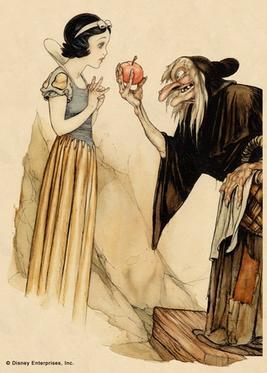
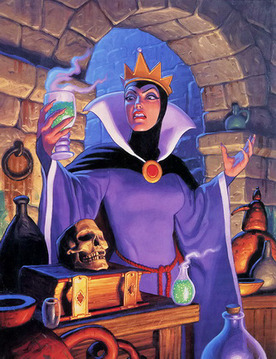

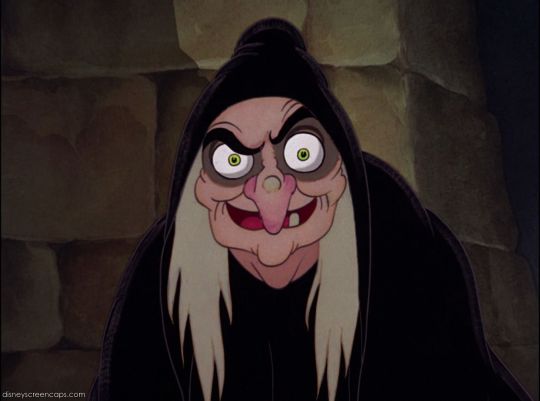
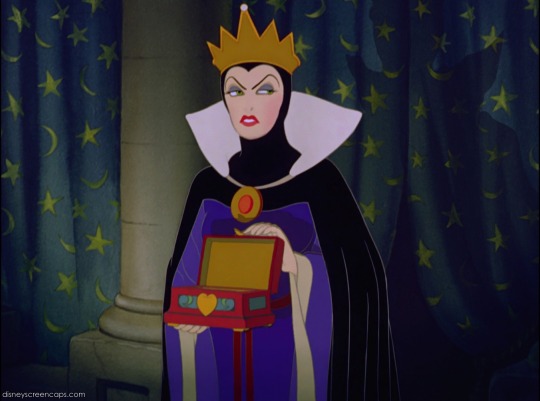
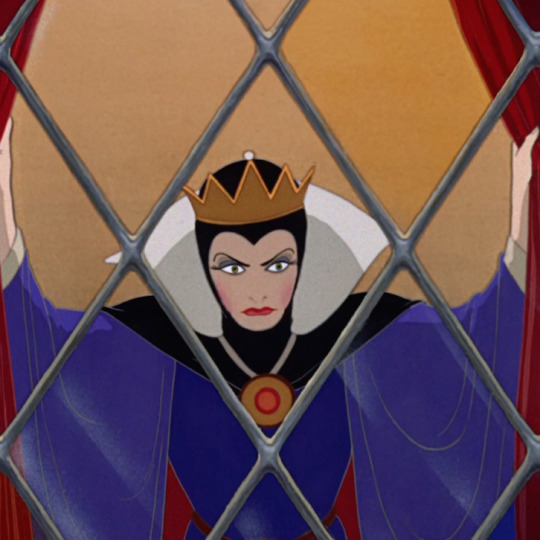


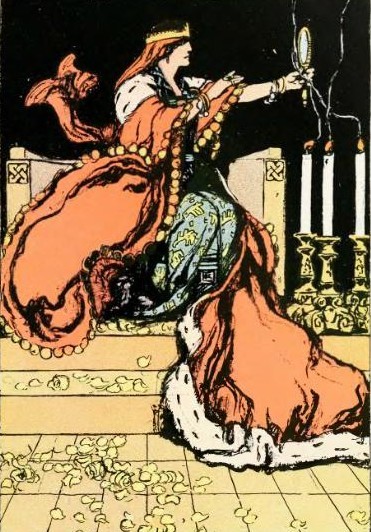
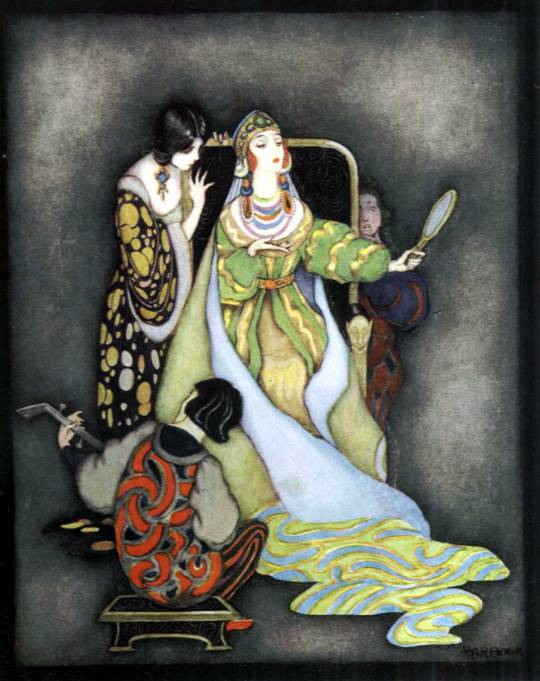
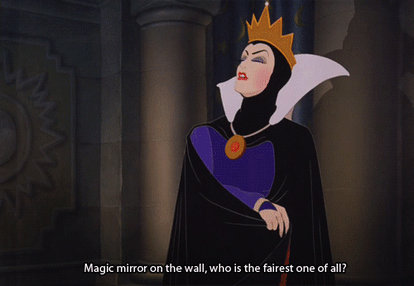
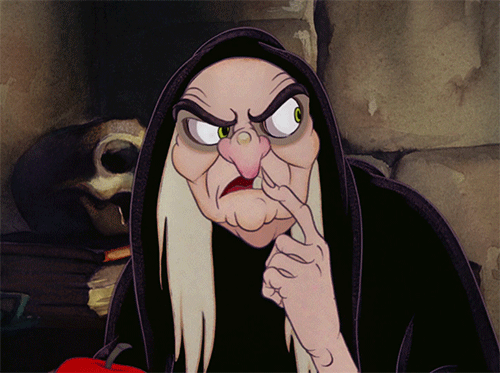

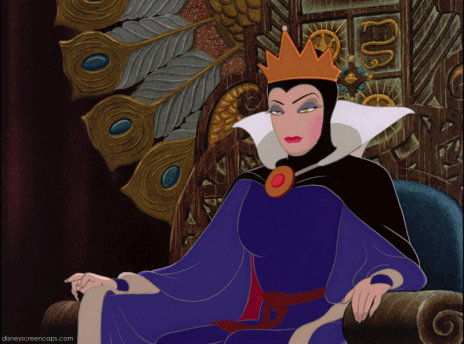

#witch#witches#witchblr#witchcraft#100witches#halloween#samhain#pagan#paganism#wicca#coven#magic#occult#disney#disney villain#brothers grimm#evil queen#grimhilde#snow white#once upon a time#regina mills#lana parrilla
647 notes
·
View notes
Text
Has surfing been stolen, again?

Has surfing been stolen, again?
“Cultural appropriation has become a bit of a buzz phrase lately as it relates to what is seen as the unauthorized and often unacceptable use of a certain heritage.
There’s a long dead Mexican fisherman that rolls over in his grave just a bit every time a Corona beer ad runs depicting yet another horribly contrived “beach scene”. You see Mexican beer, among many other things, indeed has it's own cultural heritage. A real authenticity to which probably had much to do with what made it special to begin with. Here in the US, we love to “borrow” from other cultures and we have no problem absolutely destroying the little details that made us want it in the first place. To that point, there was a time not long ago that to drink an actual Corona beer it was most likely going to happen during a surf trip down the coast of Baja, and the beer quickly became synonymous with good times and good friends. Truth be told, it was always just another cold beer in the cooler but it's association with a real and authentic moment or experience just made it taste better is some way. It wasn’t long before an ad agency got hold of it and the mystic and charm were quickly lost.
Surfing has long faced this same dilemma: that being the appropriation of an authentic culture of which is then abused in effort to sell stuff to a wider audience. The 60’s had a good swing at it. The late 80’s/early 90’s had a go and it would appear that we are again off and running as our “culture” is once more being being maligned by yet another corporate master. In most cases there is zero care or concern for maintaining even a semblance of the heritage, it's just a simple grab at something that is seen as usable marketing leverage. Be damned for what actual surfers might think, but then again we're pretty sure it's not us they're after.

Today, we need to look no further than to competitive surfing to find the latest perpetrators. Professional surfing's global governing body, the World Surfing League, has been selling our little secret as hard as it’s ever been sold and their amateur counterpart, the International Surfing Association, has set us up for what will surely be an embarrassing failure as an Olympic sport in Tokyo/2020. As usual, this new marketing push is focused on attracting a mainstream audience that needs a baby steps introduction to what many of us just head to the beach and do everyday. And once again, the charade is being brought to the masses through an attempted presentation of surfing as a bonafide sport. The simple reality being that a general interest audience is seen as unable to truly get the esoteric lifestyle stuff. Thus, the need for points, scores, results and champions. Everyone gets those, right? However, as history has shown us, time and again this approach ends up being it's ultimate downfall as the core consumer goes running in horror and this new mainstream audience suddenly has nobody "cool" to emulate. Let us break this down one more time: any lasting appeal of surfing to a wider audience will always be in the lifestyle, not the activity.

OK Fernando, we ask you: Why does surfing need to be bigger? Why not just let people find it organically, at whatever age, so the actual participants that do get involved can learn the important heritage, the time-honored traditions and in the water etiquette so as to be welcomed into the line up when that day comes? Instead, we seem hell bent on filling up surf schools and offering ease-of-use craft so as to entice every last man, women and child out into the surf. Be damed with the impacts this is having on lineups around the world as these newly enlightened, but mostly inexperienced, "surfers" are now floating through the impact zone in an ignorant bliss. A dangerous and troubling ignorance of which is all being encouraged by surfing's latest masters, and all just to sell a few more logo t'shirts, fancy socks or some other meaningless bullshit.

Oh we get it. The need to sell more stuff is a powerful motivator but as we have seen with brands and products not authentic to our heritage, the core is quick to show them the door. Discount stores full of off-price product has flooded the market and cheapened the commodity beyond repair yet the geniuses running these companies are scratching their heads wondering what happened to their brand. Just have a look around next time you're down at the local and see who's wearing what. It would seem authenticity has long left most of the surf industry and real surfers are well beyond turning their collective backs.
There’s a landfill full of soft-tops and flip-flops coming to a town near you.”
-What Youth
You Cats Have Made A Good Point & Raised A Real Discussion!
1 note
·
View note
Text
Delicisma & Matrona/Delicita Relationships in Some Depth
So like a lot of the bad things in Andromedan society, the taboo around interclass romance and even interclass friendship actually came about because of a good thing: broadly speaking, the astraea concept of an adult relationship is absolutely predicated on equality between all parties. This core notion, you may notice, didn’t stop them from developing an extremely strict social hierarchy, so to get AROUND the hierarchy (and allow for a slight degree of upward mobility), they have a thing called delicisma.
As with most things that are hierarchy-dependent, this started as a Basillan and Sitherian thing and spread around the galaxy due to their influence. It may not be this prevalent, or this formal, everywhere.
The term basically translates to “favoritism” and in its purest and most traditional form it’s like a more touchy-feely version of Roman patronage. It can encompass anything from a local noble giving special privilege to a favorite peasant to an employer taking care of the grown daughter of her employee as a sort of seniority bonus to about a dozen other things of basically that nature. In a lot of career fields there’s a strong dimension of mentorship/apprenticeship to delicisma as well, although it’s important to note that the two aren’t synonymous--while apprenticeship situations are common for kids and teens (especially lower-class ones), the high level of trust plus the emotionally intense and generally cuddly nature of delicisma make it a thing that asks for maturity. One of the adults involved is often older than the other, but only where life spans are shorter or privilege makes social shame turn a blind eye does anyone get involved in this sort of thing before her 20-quinturn coming of age. It's seen as less serious than a romantic relationship (or a platonic relationship that's headed toward forming a household) but more serious than a formal business relationship or more casual friendship. It’s distinguished somewhat by the fact that it isn’t a High Fidelity--there’s no expectations of exclusivity; matronas are often married or bound in fealty, delicitas often enter into romances--sometimes romances that their matrona sets up.
“Matrona” refers to whoever in the pair is in a position to do favors--whether because of being older, higher status, more experienced, wealthier, etc. The sense of obligation to one’s inferiors is an important part of the mainstream Basillan morality--as is the sense of gratitude to one’s superiors, which the “delicita” is expected to express through her deference, humility, and loyalty (if this sounds familiar that’s because it is--the umbralis relationship upheld by clones in servitude is this taken to a self-obliterating extreme and trussed up in spiritually binding vows).
Delicisma has a sort of social niche somewhere between romantic and platonic (it’s meant to be loving and non-familial, albeit not sensual or impassioned, and it’s seen as something you tend to be involved in before you date, marry, or start a family, although in practice they often happen in parallel) and it has a fairly definite set of “courtship” rituals, although they are newer, more subtle, and less codified than those surrounding romance. It begins with an invitation from the potential matrona to a formal social visit between just the two of you--something that can occur in other contexts, so it’s not a direct declaration of intent, but it’s enough of a possibility that ambitious young astraeas (and social-climbing older ones) tend to go through phases of treating every call on a person in a position of interest as an uneasy combination of a date and a job interview.
After a few of these visits the potential delicita is free to indicate her own interest by sending letters or a gift (nothing that feels like showing off, but something that shows appreciation for her as a person--there’s as much advice about potential-matrona gifts in this universe as there are for actual applications for jobs and things). Finally the matrona actually poses the question of whether you’d like to--always as she leads you in for a visit--and you can say nothing, or you can kiss her hand to say yes. Despite the theoretically quasi-romantic love that drives it all rejection by a potential delicita must be taken with grace and no questions asked. The matrona has nothing to lose, the delicita has everything to gain, and there are boundaries in place to keep the inherent power balance in check.
These boundaries are also supposed to extend to all affection--despite the understanding that it’s an adult relationship, you’re not meant to do anything with a delicita that you wouldn’t with your own child. As ANY touch at all between members of different classes is fairly taboo outside this type of relationship, especially in public, the boundaries let it feel special but also feel safe.
Delicisma relationships work a certain way in theory, but there’s a huge range of experiences. Sometimes they’re literally just a coverup for an inter-class romantic relationship--one of those scandalous sailor songs that we all love is literally called something along the lines of “Thank [Orellistia] for Delicisma” in translation and it’s about a noble and a peasant running away to the Maculatan colonies to get married and contains numerous winking references to the formalities of the practice and the language surrounding inter-class favors. Less scandalous but equally common is the situation of “you worked for my parents and you’ve been my favorite servant for most of my life, possibly you were my nanny/governess, I’m of noble blood and supposedly my body itself is holy but we have a familial relationship and it would be nice if we could just hug now and then”. As with most types of relationships, there are also those that are simply unhealthy or abusive. Most commonly they just amount to a close friendship/mentorship with ups and downs like any other though.
At a certain point, the delecita might ‘outgrow’ the relationship a little--via an increase in status that doesn’t directly owe to her matrona’s interest (which is pretty rare actually) or just by getting married/going into knighthood or priestesshood and having other commitments that are higher-priority--and won’t spend as much time with her matrona. But the relationship doesn’t really “end”, there’s always owed loyalty and gratitude between them socially speaking.
This was a lot but I felt like it’d be nice for you guys to really understand this dynamic since it’s very culturally different and informs a lot of Andromedan Things...honestly this post went off the rails so if you want me to clarify stuff please do send an ask!
4 notes
·
View notes
Text
Sephora “Witch Kits” Rant
TL;DR: It aches my heart to see a corporation selling this kit, but it’s also much more than that. They don’t see us as valid, and this “witch kit” proves it. Some of you all just don’t get it.
I know I only recently started posting on this account again, but I just want to talk about the Sephora “starter witch kits.”
In addition to the blatant appropriation of culture in this kit, (that’s a whole essay in itself, and I’ll briefly touch on it later), I’m just really upset that I know these kits are likely being sold by people who don’t actually believe in witchcraft or paganism at all.
Like, I just know these CEO’s would look at a witch and/or a pagan and laugh in their face. They would call our religions fantasy and our gods false, just like Christianity did when they were wiping out and appropriating our practices (I say plural because they wiped out and appropriated many different cultures and religious practices) in favor of their god.
I just have this ache in my heart seeing this kit being sold.
On one hand, I like that witchcraft may becoming more accepted and more mainstream, but on the other hand I feel like it’s not true. I feel like it’s coming back as an aesthetic, something to place on a shelf so you can show your friends how “cool and witchy” you are.
This is what this kit feels like to me. A “gimmick for the youth” to profit off of “witchy vibes.”
You can’t just throw a bunch of stuff in a box that originates from several different cultures and expect me to believe you actually care about baby witches. The only thing you’ll get me to believe is that you think all these practices are a gimmick and something you can sell for your amusement or aesthetics.
“Oh but this happens all the time! It’s been happening for years!”
Yeah, well, that doesn’t make it right.
I’ve also seen a lot of “It’s your practice, don’t let anyone shame you!” and I feel like most of the people who say this are the ones who don’t understand what it’s like to know that the religion and practices of your ancestors were mocked and their gods cast out. That your ancestors were burned, hanged, tortured, exiled, etc. That their practices and traditions were either wiped out completely or stolen and turned into “Christian traditions” to help more people convert to Christianity.
Yeah, I hate gatekeeping, I’m all for people practicing and people reclaiming traditions they were either robbed of when their families came to America or when their ancestors converted (Newsflash, it wasn’t always voluntary), but some of you all just don’t get it.
Also, before someone misunderstands, when I say “reclaim traditions you were robbed of” I’m not talking about appropriating another cultures’ traditions so that you can have some.
I’m talking about those of us who knew where we came from (or those who have a slight idea, I know a lot of Americans don’t know exactly where they came from as a lot of traditions tended to get beaten out if they weren’t culturally American or Christian [*cough* or white] enough) and are trying to reclaim the traditions of their ancestors the best they can.
This doesn’t mean that you should be taking that 1/32nd of Cherokee your family claims to have and take the parts of those Native traditions you like and run with them.
I’ll use myself as an example. Yes, my father’s family claims to have Native American blood too, but I wasn’t raised in it. I know no one of Native decent. I wasn’t raised in their traditions, I did not come from that life. It wouldn’t be right for me to just go and cherry pick what I thought looked cool and say I believed in it while I ignore major parts of the traditions and practices and history.
Would it be different if I sought out possible relatives and requested to learn more about the culture and traditions? Perhaps, but I can’t just take from that of which I don’t understand.
Where I do pull my practices from, however, comes from my European ancestry. My practice is made up of mainly Celtic and Norse mythology (yes, they are different) because I was raised with more of an understanding of those traditions, even though my family was soft-practicing Christian.
Now, growing up I knew I had never believed what my family believed, but it wasn’t until I got older that I realized that my beliefs had always aligned more with Pagan beliefs and practices.
It also wasn’t until I started to study more about these practices and beliefs that I started to get angry. As I studied I found that the traditions of my ancestors were either appropriated and transformed into Christian traditions or cast out completely, and their gods were literally demonized. They were forced to convert and give up their beliefs, or they died. Literally almost everything my family had practiced as “Christian” was a bastardized form of various traditions from the religions I was now practicing and becoming closer to, stolen and warped to fit a Christian god.
Much of their imagery and practices are now synonymous with fantasy and regarded as nothing more than fairy tale or superstition.
I live in an area where Paganism is seen as a joke or evil. Often both. If you claim to be Pagan, you will either be laughed at straight in your face, seen as crazy, or treated horribly out of fear. Usually a combination of the three. So obviously I’m closeted.
I know that when I have children, I will want to teach them my beliefs and practice traditions, to give them a culture. But I also fear what will happen to them if I do, as society is going to tell them they are wrong, and that their “Pagan Mother” is going to hell. And honestly it breaks my heart knowing I might have to choose between not teaching them to keep them safe, or teaching them and knowing that it might result in their harm if the wrong person catches wind. (You might say “Just move!” but I fear it won’t be an option.)
I guess what I’m trying to say is that if you take anything away from this, let it be this:
If I, a white person who has grown up with my white-privilege stapled to my forehead, can be angry about their ancestor’s traditions and beliefs being cast out and feel robbed of their culture, and can be afraid of the repercussions of being open about being Pagan, imagine what it’s like for a POC.
Imagine what it’s like for a Native American, who’s ancestors were murdered in mass genocide when European settlers came, having to watch as symbols of their traditions are sold for aesthetics or “witchy vibes.”
Or someone of Mexican decent who constantly get’s told they don’t belong here (i.e: “Build the wall!”, “Go back to Mexico!”) even though it was actually USA’s border that crossed them, and not the other way around. Every Halloween they have to see white witches (and who are we kidding, it’s not just the witches) setting up sugar skulls on their altars and painting their face for Day of the Dead without any knowledge of what an ofrenda is or that the holiday is actually on Nov 1 & 2. But hey, it looks cool, right?
Or a black person who’s ancestors were literally ripped from their home and cultures and forced into slavery. Now several generations down the line they don’t know where their ancestors actually came from other than “Africa” and that many if not all of their traditions were beaten out generations ago, only to now see that African voodoo and hoodoo practices are now suddenly “cool” and being sold as home decor or practiced by white witches who think it’s neat.
It’s more than just the fact that a corporation will be profiting off our cultures, it’s the fact that they’re doing it because they don’t see us as valid. We’re nothing more than a fairytale, people living out a fantasy even though our gods came before, and these kits prove they see our practices as nothing more than a cheap trick or a gimmick, something to be massed produced and profited from.
It’s insulting.
#sephora#sephora witch kit#witch kit#cultural appropriation#witchcraft#pagan#paganism#witchblr#appropriation#witch
19 notes
·
View notes
Note
I totally agree about being more vanilla and certain asks being a hell to the no. I’ve been with the same man for 4 years so we’ve tried almost everything but nothing gets me off more than a man (/idea of) worshipping you with his words while you enjoy each other’s bodies. I feel like people in these types of relationships are seen as boring by society because time together doesn’t involve hurting your partner ect. I CAN confirm that those in vanilla relationships can/still do have great sex
Also same anon as previous, but a PS that your style of writing and the way you write about B x reader (the way he behaves / talks to/ treats the reader is exACTLY my style. Nothing is hotter than a man who knows how to use his words in all the right ways. You fuck ya girl into next week but if you don’t know how to work me up with your words mixed with a super loving/ caressing touch it’s not gonna happen. You know what IT is ;)
i’m often confused as to whether i’d be considered vanilla or not, or at least if my fic would be considered vanilla or not. i remember an ask from a while ago saying i was into some kinky shit n i was like “bwuh?” n figured i’d be considered hopelessly vanilla by most (as if vanilla is bad/isn’t fucking delicious: the smell, the taste…fucking lovely. plus it got b sniffing ryan’s armpit haha n telling him he smelled good :P). are things like vibes n other toys, pegging/anal/prostate stumulation, diff kinds of tribadism/frottage, b in panties, b being pretty arguably “submissive,” etc vanilla or “kink”?
dasfljgf i love yr wording of “worshipping you with his words while you enjoy each other’s bodies.” i think there’s a major desensitization going on, and it’s starting by 10-11 years old. people with little masturbatory experience (or none), and no partnered experience beyond curious more than sexual exploration when quite young (that they may not even remember) or none at all, getting fucking whammied with brutal porn right off the bat. and that being most to all of what they see in sexually explicit media for years on end, seeing it in unprecedented levels with the internet both re age of first exposure, how often/how long they view it, how girls as well as boys are growing up on it. seeing brutal contacts for years, mixing arousal, masturbation and orgasm with fear, pain, cruelty, faked arousal and orgasms, violence, harm, etc and often feeling rough touch (eg overt obvious sexual assaults, sexual situations that are assented to but not wanted, sexual situations that start out wanted and become painful, scary, thinking you want and will like something only to have it feel scary, painful, unarousing, feeling broken because you didn’t like it, etc) before feeling a consistently soft touch, hearing sexy words that are kind, having all these mythologies about sex esp piv told to you in n out of porn and romanticized outside of porn (eg that all women come during it, that it’s the best sex ever, that sex=piv=sex), that that is simply what sex is and what men and women do together, erasing so much of what can happen heterosexually to the point you don’t even think it possible or thinkable, etc.
porn is about the visual too, how things look (and sound) on camera in specific ways (eg focus on repetitive penile thrusting into an orifice, make up, heels, faked porn moans), not how things *feel* emotionally or physically. how your skin rubbing on someone else’s feels. how a kiss, lick, caress, suck, squeeze, feels and how these feelings change depending on firmness n skill, emotional connection (including friendship), level of arousal, etc. how it feels to touch someone else. how it feels to stroke over their genitals. how it feels to feel intensely aroused, or to let arousal build slowly, or have it wash over you in waves. to need someone at that moment, to wrap your limbs around them and squish them to you. how it feels to feel safe and loved and comfortable and horny and full of want vs scared, detested, uncomfortable, in pain, whether or not this is mixed with arousal. you don’t get into how the people in porn feel–what is really going on in their heads? what are they feeling emotionally? how does what’s happening actually feel to them? why for all the theatrics, performing, acrobatics, etc is there so little feeling?
within a generation we’ve gone from knowing men could go months and even years without looking at porn, and having many men who did just that, and most boys and some girls furtively sneaking peaks at their dad’s or a friend’s dad’s playboy or even penthouse, maybe a softcore vhs (rip soft core porn; it isn’t made anymore by pornographers, now it’s mainstream media, eg ads, game of thrones. not that soft core was fine and dandy, but much of it is quaint in comparison to what we have now), or pornographic or smutty books to thinking that if one doesn’t look at porn regularly they’re either asexual or lying or inhibited n need to free their mind n get on that porn, and that porn and masturbation are synonymous (eg that one can’t masturbate without porn).
i remember reading one guy writing about how the sight of a girl’s pubic hair peeking out of her bathing suit would get him hard quick as a boy; now pubic hair is disgusting, and men and boys generally only find hairless vulva appealing. that’s a less extreme example of what i’m talking about, but you can imagine (and come across) the spike in interest in daddy kink, men strangling and choking women, the hetero male obsession with pia with females (and it’s connection to sadism/injury in both the advertising of it, what happens to women in porn and women and girls in relationships), etc.
and the view that porn just let’s us find out what we naturally, truly like?!? that we’re only turned on by it if it represents our True Sexuality? ha. you really mean to tell me that millions upon millions of girls were champing at the bit to call their boyfriends, husbands, male community members/mentors/teachers, celeb crushes, etc daddy throughout the millennia? that millions upon millions of women have lain awake at night, over the millennia, mourning the fact that their husbands would not strangle them and call them worthless whores and fantasizing about it endlessly, craving it?
do we really think human males as a class (as a whole) are born wanting, or needing, or truly longing to strangle, choke, shove, engage in piledriving thrusting, slap, beat, namecall, control, possess others, have sexuality centred around them and their sadism, and females as a class are born wanting/needing/longing to have that done to them, service whatever desire men have, no matter how cruel or violent, and indeed, we want it, or at least deserve it, no matter how cruel or violent? that males are born sadists and females masochists, and that is what it means to be male or female? (and if you don’t fit that mold, you’re not a real man/woman?) that all those sweet boys and willful girls are really longing to hurt and be hurt respectively (maybe with the caveat that if they are the rare exception that they are really the other sex inside)?
this is not denying psychopathy in a small per centage of males, which is largely inborn and more likely in males than females due to genetics and usually expressed more extremely (physical and sexual harm to others, rape, serial murder) in males due to greater physical strength from testosterone and gender socialization, but i hardly think most males are born psychopaths, and honestly, psychopathy and sociopathy, and serial killers, come to mind when looking at mainstream internet porn. i’ve been meaning to make a list of quotes by bdsmers and pornographers alongside serial killers without sources, asking “top/dom/sadist/porn or serial killer?” then revealing who said what, if it doesn’t already exist (been meaning to look). i do not think we, either sex, are born like this as a whole. and this is leaving aside the fact that “nature” neither means right nor inevitable. we decide how we want to live, act, treat others, can counteract how our sexuality is being shaped.
i consumed porn directed at straight men from 8-12, and it absolutely shaped my sexuality then, although since we’re talking about 1995-99, it mostly revolved around and got my sexual thoughts revolving around piv (eg thinking that’s how all women came, how i would come even though i masturbated clitorally/by humping my blanket or sweater or my hand between my thighs) with some more varied sexuality between women on the side. a couple friends of my dad had magazines–one of which had a magazine that claimed to be child porn of a 15 year old btw–that i would sneak peaks at n quickly/furtively masturbate, and i’d stay up late at night watching the ppv porn that we had one of those descrambler boxes to watch for free. i honestly don’t even remember seeing pia in any of those. now, you can’t escape it.
so back on track: i’m glad my writing hits your sweet spots in more ways than one wink wonk :P i’m digging the compliments folks :D i know what IT is with a capital I and a capital T, eh?
3 notes
·
View notes
Text
Types Of Psychic Abilities
In the swirl of misconceptions, misunderstandings, and general confusion surrounding the fields of parapsychology and psychic activity, most people have no idea how to make distinctions between different types of psychic abilities. Wait a minute, you say, I didn’t even know there were different types! You’re in the same boat as most everyone else who has a basic understanding of psychic reading and activity. Little does the general public know, it’s not all tarot cards and psychic phone reading — There are sharply defined distinctions between everything from the obvious (tarot reading and telepathy) to the surprising (clairaudience, clairsentience, and clairvoyance).
First, let’s discuss what defines psychic ability in the first place! Extra-sensory perception (ESP), prophesies of the future, and a “sixth sense” could all be defined under the blanket term “psychic ability”. But where does psychic ability come from? Actually, no one really knows – not even psychic readers. People who claim to have psychic abilities describe a sense of just “having it” without having any conception of how it got there. Most say that it is part of their regular consciousness, and that they simply “know” or “feel” things before, during, or after they happen – despite being unable to explain how. Though parapsychology has been heavily criticized, scrutinized, and stigmatized, the truth is that as much evidence points towards its veracity as against it.
So what are some of the different types of psychic abilities? To begin with, there is the art of “channeling,” which is defined as the ability to receive and transmit information from another external consciousness while in a decidedly altered state of mind. Though each incident varies in intensity and resulting activity, many share the same basic traits: a semi-trance like state and the appearance of an outer entity expressing itself through the channeler. Many people have been able to obtain a psychic reading of another entity and consciously channel that entity – but professional parapsychologists don’t recommend trying it until you’ve been well-trained and prepared.
Three more (related) types of psychic ability are clairaudience, clairsentience, and clairvoyance. Clairaudience is generally defined as the ability to hear or sense sounds that cannot be perceived by a non-psychic person. Clairsentience is another type of extrasensory perception in that clairsentient people can sense past, present, or future events through “sensing” them, though non-clairsentient people cannot perceive them. Clairvoyance is a synonym for extrasensory perception – any knowledge or consciousness of an event outside of seeing, hearing, tasting, touching, or smelling it.
Divination is another often-misunderstood type of psychic ability. Divination is the act of making prophesies or predictions through the practice of occult arts. Contrary to popular belief, this is different from intuition – which is defined as the ability to perceive or act based on “just knowing” that it’s the right thing to do. Tarot Cards and tarot reading is a form of divination. Although the mainstream ideas of divination and intuition have been tweaked to seem like anyone can tap into this psychic energy field, the truth is that only a few people take the time to hone and develop their extrasensory perception skills.
What’s the difference between psychometry and psychokinesis? Well, psychometry is defined as the ability to glean information about an object by obtaining physical contact with the object. Good examples of this are seen in countless movies. Envision it: The hero touches a book and, upon contact, is filled with images of its previous user and the fate that befell him or her. Psychokinesis is the ability to move objects through willing it or thinking it.
https://www.activecampaign.com/?_r=VXL52IQ1
0 notes
Text
How World War I Changed Pablo Picasso
As a citizen of neutral Spain, artist Pablo Picasso didn’t fight in World War I. He did, however, watch his French friends go off to war and spent the war years in Paris. Already a prominent modernist artist, Picasso stood outside of mainstream society, but couldn’t escape the influence of his adopted country torn by war. How World War I changed Pablo Picasso and his art is the subject of the exhibition Picasso: The Great War, Experimentation and Change, which runs at the Barnes Foundation through May 9, 2016. Even for an artist who continually shifted styles, Picasso’s Great War experience radically changed him and pointed the way to everything that followed.
When the geopolitical dominoes fell after the assassination of Archduke Franz Ferdinand of Austria in 1914, Picasso’s name was synonymous with modern art, specifically Cubism. Works such as Still Life with Compote and Glass not only proved Picasso’s Cubist bona fides, but also demonstrated his continual experimentation, as seen in the almost pointillist dots on the playing cards in the painting. Ever resistant to labels, Picasso continually pushed the envelope creatively, experimenting his way from one style to the next. Picasso’s push accelerated as the Parisian homefront around him began associating Cubism and other modern movements with the enemy. “Disparagingly referred to as ‘bôche,’ Cubism was identified with the German enemy and perceived as unpatriotic,” curator Simonetta Fraquelli writes in the catalogue. (A short film in the gallery wonderfully captures the wartime hysteria that swept Cubism up in its wake.) Even if he never saw the battlefield, Picasso still needed to battle misperceptions of his art.
Picasso, the arch-modernist, therefore shocked fellow artists in 1914 with a naturalistic, neo-classically French drawing of his friend Max Jacob, one of his few French friends not pulled away by the war. How could you make Cubist and naturalistic images at the same time? Drawings such as that by Picasso of his future wife Olga felt like a slap in the face of modern art, a turning back of the aesthetic clock. Rather than a “repudiation,” however, Fraquelli argues that “the two artistic styles—Cubism and Neoclassicism—are not antithetical; on the contrary, each informs the other,” sometimes even happening simultaneously in some works by Picasso.
Such radical coexistence appears in Picasso’s Studies, in which Cubism and Neoclassicism appear literally on the same canvas, compartmentalized for the moment, but standing in fascinating juxtaposition to one another. Picasso frames miniature cubist still lifes about a realistic woman’s head, hands, and a couple dancing on the beach. Despite the visual boundaries, the styles spill out onto one another—the Cubism verging closer on naturalism while the naturalism metamorphosizes into something almost inhuman in its monumentality. “Picasso was intent on defining a strategy by which he could retain the compositional structure of Cubism while introducing elements of naturalistic representation,” Fraquelli believes. Whenever anyone wanted to label Picasso as a Cubist, a Neoclassicist, a Patriot, or a Traitor, he looked for a new way out.
To look forward, Picasso looked back—both far back and more recently. The great magpie of modern art, Picasso turned his long-time love of the Neoclassical Ingres and blended it with his newfound respect for the more recent work of Renoir. Possibly another portrait of Olga, Seated Woman takes elements of Ingres’ classical mode and grafts them onto the joyous fleshiness of Renoir. As the exhibition points out, many see post-war works such as Seated Woman as a calming call for a “return to order,” but the catalogue chooses to echo critic T.J. Clark’s view of Seated Woman as “the best means [Picasso] has, in 1920, to make the body materialize again” after the disintegrating forces of Cubism (and, possibly, the war).
Pivotal moments in Picasso’s wartime development, personal life, and the exhibition all center on his involvement in the ballet Parade. A room full of candid snapshots recreates the fun-filled day of August 12, 1916 when Jean Cocteau, on leave from driving a Red Cross ambulance for France, asked Picasso to design sets and costumes for a ballet starring Sergei Diaghilev’s Ballets Russes company dancing to poet Guillaume Apollinaire’s libretto and Erik Satie’s music. “Much of the energy generated by [Parade] derived from the way Picasso played Cubist elements against figurative ones, especially the contrast between the lyrical classicism of the safety curtain and the violent modernism of the set behind,” Fraquelli writes. Picasso’s Cubist costumes, including that for the Chinese Conjuror, literally brought Cubism to figurative life on the stage. Seeing recreations of the giant costumes loom over you and watching performances of Parade in the exhibition, you get a sense of the collaborative energy of the piece and Picasso’s desire to get involved.
Parade rejuvenated not only Picasso’s search for stylistic resolution, but also his love life when he met (and later married) ballerina Olga Khokhlova. In his catalogue essay, Kenneth E. Silver credits Cocteau as “a specialist in binaries like these [found in Parade], and of invoking and unhinging them in especially provocative ways.” Picasso found Parade provocative in a good way, but the public, unfortunately, generally didn’t. Cocteau’s dream of uniting the old form of ballet with the new forms of modern art failed to appeal to a public, Fraquelli suggests, “long[ing] for the escapist entertainment of classical dance, not a foray into contemporary life and popular culture.” Accounts of the uproar vary, but in the worst, only Apollinaire, in uniform and sporting a bandaged head wound, could save the angry mob from throttling the cast and crew. Parade’s failure illustrates the mood of the time as well as the high stakes of the stylistic games Picasso was playing.
Picasso continued to oscillate between styles, not schizophrenically, but in a single-minded search to expand his horizons while escape all boundaries. The exhibition offers the 1918 Pierrot and the 1924 Harlequin Musician as perfect examples of Picasso’s ability to shift gears and consolidate approaches continually. The only constant is Picasso’s constant searching for a new method, a new approach to representing the world and the people in it. Pierrot is more realistic, but his sadness “recalls the unsettling and enigmatic ‘realism’ of Giorgio de Chirico’s early metaphysical paintings,” Fraquelli points out. On the other hand, the allegedly cold, analytical Cubist Harlequin explodes with color and joy, perhaps the realistic picture of a man deliriously in love. Picasso forces us to ask which is the more “real” picture.
What is the “real” picture of Picasso? Is it the postwar self-portrait he drew, mingling Neoclassical realism with the strong line he would go on to simplify into stirringly childlike power to touch the emotions? Picasso: The Great War, Experimentation and Change fills in more details of the “real” picture of Picasso, especially for those who know him best as the creator of Guernica, the most powerful artistic peace statement of whole war-torn 20th century. Just as the First served as a prelude and catalyst for the Second World War, Picasso’s artistic response to World War I shaped and inspired much of his response to World War II, when his native Spain lost its neutrality and joined in the carnage. A small but tightly focused show, Picasso: The Great War, Experimentation and Change argues by the end that all Picasso wanted was freedom from all ideologies, all dogmas, all limiting labels—the freedom to be and to find out what being entails, a freedom critics and wars so often curtail.
~
Bob Duggan · Mar 4 2016.
#Pablo Picasso#painting#art article#history article#ww1#barnes foundation#jean cocteau#sergei diaghilev#big think
0 notes
Text
Conspiracy theories
I had a teacher once who said that to define a word or a contested concept, determine what it is not. So it might be with a phrase we have heard and read about a lot lately: conspiracy theory. Even more popular is conspiracy theories, which lets you group numerous theories together, and treat them alike.
Let’s consider what conspiracy theories are not. They are not:
Rumors
Predictions
Lies
Fanciful stories
Fabrications
Impossibilities
Delusions
Alternately, conspiracy theories are often treated as, or they function as:
Accusations
Hypotheses
Speculation
Alternate accounts
Narratives
Authors of conspiracy theories, and people who do not dismiss them out of hand, tend to be skeptics. They distinguish plausible accounts from implausible ones. They feel comfortable with synonyms in the second list.
People who dismiss conspiracy theories also tend to be skeptics, but in the other direction. If something has a whiff of conspiracy about it, they stay away. They are quite conscious of what would happen to them if other people were to whisper conspiracy theorist behind their backs, or in public. They know because they have seen contemptuous ridicule heaped on others.
Where does that leave us with our definition then? We’ll consider parts of speech and other definitional matters in part two.
_____________________________
Aphorism for the day:
“Moral behavior is when you act in the other guy’s interest, not your own. If you expect the other guy to reciprocate, that’s delusion.”
_____________________________
Time for a bit of part two here.
Here’s the main message: get suspicious when people play fast and loose with parts of speech. For instance, if an immigrant family resides in the United States without proper authorization, nativists call them illegals. Illegal is an adjective. You can’t add an s to that word to make it a noun. Yet does it not sound degrading when you do? “You illegals, go back where you came from.” Contempt drips.
Another one that lives large is messaging. That’s where you add ing to message, the verb, to turn it into a noun. First of all, to say, “I want to message you, but I don’t have your cell,” sounds too hip by half. The old-fashioned,“I want to send you a message...” works better.
Message always works better as a noun than messaging. If you say something like, “The messaging is all wrong,” you immediately sound like you are up to something Orwellian, or at least devious in your use of words, and you probably are.
Now we come a two-word variant, which as Gollum would say, sounds tricksy. What advantage do you gain when you take two nouns, then make one an adjective for the other? After all, conspiracy is a noun. You cannot use it to describe what kind of theory you have in front of you, unless you press it into service for that purpose. Why would you want to do that?
As soon as you ask the question, the answer becomes obvious. How do you respond when someone says, “That’s just a conspiracy theory.”? Imagine if someone came to your garden and said dismissively, “That’s just a hay grass.”? All you can say is, “So what? What does that even mean?”
So the person who wants to put you down deigns to explain: “What you said is a theory about a conspiracy.” Ooohhh, got it. Still, why would you choose the word theory, if not to deliver a putdown? It seems explanation or hypothesis would be more accurate, if you want to talk about nefarious plans made by more than one person.
Let’s take a few examples of how conspiracy theories work in real life. All of them, in one way or another, involve the Federal Bureau of Investigation. I will develop these examples rapidly, with confidence that you know the back story, or can easily look it up.
In the early 1950s, the FBI charged Julius Rosenberg with espionage. They falsely charged his wife, Ethel, as a co-conspirator, in order to ‘persuade’ her to testify against her husband. When she refused, they electrocuted her at Sing Sing, on the same day they executed Julius. In this case, the FBI formulated a conspiracy theory based on false testimony against Ethel, and they stayed with it because they would not back off their threat.
Only ten years later, the FBI mounted a long, extensive investigation into the murder of President Kennedy. A lot of people at the time, including the president’s brother Bobby, believed that more than one person had a hand in Jack’s death. Yet the FBI insisted that one person - a ‘lone nut’ - had planned the murder and carried it out.
If the FBI had investigated John Wilkes Booth, they would have insisted he was a lone nut, too, if that’s the conclusion Andrew Johnson wanted. The Kennedy case, then, was the opposite of the Rosenberg case, in that it suited the FBI’s purposes to deny a conspiracy existed, despite a great deal of evidence to indicate the murder was not the work of one person.
Now we come to a comparison between two elections, and two so-called conspiracy theories. They are actually just accusations, dressed up as conspiracy theories. After the 2016 election, Hillary Clinton charged that Donald Trump became president with help from Russia. The FBI tried to lend support to this accusation, but it misplayed the situation just as badly as it misplayed both the Rosenberg case and the Kennedy assassination. Or you could simply say, “The truth will out.”
After the 2020 election, Donald Trump charged that various organizations and people across the country had stolen the election from him. He said officials used fraud to rig the vote in order to elect his opponent. He tried mightily to enlist his own Justice Department in the cause, but the FBI just hates him, deep down, so he would never find help in that quarter. He had to rely on Rudy Giuliani and Sidney Powell as his advocates, poor substitutes for the attorney general and the FBI director, to be sure.
Interestingly, Trump’s accusations have no more substance than Clinton’s, yet we observe how differently people treat the two candidates. To this day, Clinton believes Russia helped Trump steal the 2016 election, as do former intelligence officials John Brennan and James Clapper. You can even say Russia collusion is Clinton’s pet conspiracy theory, no evidence required.
Trump, by contrast, makes enemies by the bushel, and sinks well below Clinton on the likability scale, which tells you something. Then he encourages insurrection based on his “Stop the Steal” campaign. He and his supporters go way past conspiracy theories at this point. The mob that invaded the Capitol did not care how nameless conspirators might have rigged the vote: they just wanted their man to stay in office.
So people refer to QAnon conspiracy theories to discredit the mob, but the mob’s behavior speaks for itself. You do not need online conspiracy theories to explain why an angry mob would beat a police officer to death with a fire extinguisher. Yet that is what we do. We seem to think that if we can suppress conspiracy theories, we can also suppress insurrections at the Capitol building, or anywhere else they might occur.
Beware the use of any phrase as an epithet. Some conspiracy theories are true, others are not. Far better to use vocabulary appropriate to the case. The FBI presses charges of conspiracy against Ethel Rosenberg to extort testimony against her husband. After Jack Ruby executes his victim in the basement of a Dallas county jail, the FBI concludes nearly a year later, “Justice was done. Oswald acted alone.” That is what Johnson, Hoover, Warren, Dulles, Ford, Specter, and dozens of investigators wanted Warren’s report to conclude.
We jump ahead fifty-five years to find that practically the whole Department of Justice goes along with Clinton’s charges of conspiracy, partly because the department cannot forget how Trump fired James Comey. They also seem to respect Clinton because her husband used to be president. Mueller nabbed numerous Trump cronies, but uncovered no evidence of collusion or other nefarious electoral behavior among the lot. Yet a lot of people still believe it was so.
Mainstream accounts say Trump’s accusations about a stolen election are delusional, the accuser mad. No one says that, or will say that about Clinton. The comparison does not suggest that Trump’s charges might be valid, or that he carefully weighs his words. It does suggest that when we analyze evidence and narratives that account for election outcomes, we do not need to discuss conspiracies, or theories. We just want to understand what happened.
So let’s drop the term conspiracy theory, and its plural cousin, conspiracy theories. Consider complicated stories case by case. We have a rich vocabulary to discuss crimes, evidence, motives, context, and multitudinous details that help us make sense of history. Let’s use it. The epithet conspiracy theory empties our brains, clouds our insight, and debases our thought.
0 notes
Text
a manifesto- a call for the end of liberalism, and an analysis of the 2020 election
10/18/2020
The hypocrisy of “both sides” of the political two-party system is impossible to ignore; every day the conservative and the liberal party become more deeply entrenched in their own self-produced agendas. While most critiques of “both sides” are often center-right leaning and are encoded with messages of propaganda against extremist factions (often misguided and identified incorrectly), leaving the reader with a dissatisfied sense of center extremism, this is a critique drawing heavily on a Marxist scholarship and grassroots activism. While most would classify these perspectives as “progressive”, that term has become synonymous with a Bernie Sanders “reform” driven ideology that relies heavily on blame and cultural classism. This critique of the modern political parties and the Liberal’s abhorrent approach to “voting fascism out” resides somewhere so far left that it may touch some ideology of anti-big government libertarians-- as the political “spectrum” is most likely shaped as a circle instead of a straight line with polarizing ends. What the libertarians would take up arms to (no pun intended) is the vehement anti-capitalist and anti-private ownership approach to modern socioeconomic and political matters. The only solution to a country in need of constant reform is a complete upheaval of all governing systems. Abolition is the only answer to a failing government-- this calls for the abolition of capitalism, the criminal justice system, and politics as we know it. The framework we need is anti-racist, anti-oppressive, anti-classist, and also pro collectivity, communism, and ultimately activist-driven.
The fundamental reality is that while the two party system controls the political realm in real applicable ways (which bills are passed, supreme court nominations, and public discourse), the social movements that are heavily categorized by “two party bipartisanship” are more nuanced-- instead of it being as simple as “the right” and “the left”, social movements and unrest derive from groups that are challenging to define. It is not so easily defined as Democrats and Republicans or Liberals and Conservatives-- while the real tangible implications of political decision making happens between these two parties, the discourse that motivates opinion, choice, and most fatal-- violence-- is hard to place. Social discourse, the “zeitgeist” of individual and collective political unrest, and thoughts are taking hold in somewhat of a makeshift fashion, thus producing a diaspora of political opinions.
This “diaspora” of political opinions, emotions, and identities is a tool intentionally weaponized by the establishment-- and I would argue, upheld largely by establishment democrats. Collectivism or true community cohesion is the largest threat to our government’s autocratic “democracy”. Liberalism and neoliberalism are founded upon a myth of the individual, and the power of communal spirit and collective action promise to turn those ideas on their head-- reminiscent of a Marxist approach to modern philosophy. The maintenance of the economic order of capitalism through the production and reproduction of us (citizens) as individuals is not the only or highest form of psychological violence our government commits against its own people-- establishment government representatives work to also uphold a cultural and sociopolitical order by restricting our ability to be communal beings. The fact that we cannot name or place these diasporadic social movements or bodies of thought and belief are intentional-- the two party system does not want us to know where to look to find others like us. The belief and acceptance by Americans that there are two boxes wide enough to fit us all is a condition of mass manipulation and the product of the most successful bi-partisan campaign our country has ever seen-- a campaign that prioritizes violent individualization and hypercapitalism above all else.
We see this belief in the establishment and ignorance of the emotional diaspora of political opinions in this county the most clearly when we depoliticize our emotions and identity politics and examine the inauguration of Donald Trump, and the Democratic outcry and downright hatred projected onto Trump supporters. Following the thread of deconstructing our communal emotions in a capitalist environment, and for the sake of definition, “liberals” refer to people who associate themselves with the Democratic party and work to uphold establishment liberalism. Many Democrats would not, on first examination, appear to be this sort of establishment liberal, and would not identify as such. Put simply, moderate Democrats denounce the violent BLM protests, are excited about voting for Joe Biden, and express their distaste for poor working class Americans through their cultural elitism. The “Trump supporters” I am most uniquely interested in are not the rich Republicans who have historically voted red for “economic reasons”, but those who voted for the loud mouthed, highly opinionated, and violently charged man on the grounds of social and cultural disenfranchisement-- justifying their vote and working to excuse casual racism and xenophobia through their own process of being cast off by mainstream culture. To define a type for easier identification, I focus on the poor, working class, blue collar white american men who feel an attachment through Trump and the alt-right through their inability to grapple with or find identity through the left-dominated mainstream media and “culture”. We see here a battle between white suburban mothers who first expressed collective action in the 2016 Women’s March and the rural mid-30s white man who has experienced unemployment and seen his neighbors die from opioid abuse. We see a struggle between class, culture, and the hypermasculinization of the “American Dream”; it's a battle between two individual identities, one highly rewarded by a “safe” community, and the other cast away from its long-standing supremacy. In this battleground we see how Trump’s racist hypercapitalism was elected, and will most likely be elected again.
Within a hyper-capitalist society, the only accepted form of communalism or tribalism is an association with one’s economic class. Liberals will denounce Trump and his policies, yet be the first to excuse their neighbor, coworkers, or dinner party guest’s choice to vote for him based on economic justifications. They will excuse the behavior of those within their class-- the judgement, conflict, and exclusion will only come at the expense of those above or below them. The problem is always “rednecks”, “hicks”, “billionaires”, and “the 1%”. Liberal communities refuse to acknowledge their own as evil-- a community of individuals that actively “other” anyone who does not fit into their morally righteous club. The problem is never “the soccer mom” or the dad who is awarded the economic privilege to be a “stay at home dad”. The problem lives somewhere beyond the gated community, beyond the voting booth, and far away from the public schools that are advertised as a selling point for property. Class solidarity trumps moral judgement or empathy. Class solidarity has been prioritized most effectively by the moderate liberal class; the villainization of poverty and a lack of education has not only worked to discredit an entire subsector of our society, but has also worked to produce its own supremacy.
The 1% did not elect Donald Trump. Donald Trump will maintain power and authority because of the lack of empathy, care, organizing work that moderate establishment democrats have ignored over the last four years. Since 2016, there has been no true investment into closing the wealth gap or the cultural gap between the rural/urban divide. There has been a lack of cross-aisle conversations in a true, radical approach to community healing and restorative justice. While restorative justice often refers to communally healing from a criminal act of harm, restorative justice in emotional political cultural settings are centered on a harm that is not inherently criminal, and has failed to be named by the current administration. Establishment Democrats are angry with the “right” and morally just aspects of Republican and alt-right rhetoric, but their approach to navigating these very real and impactful issues rooted in violence and oppression is ineffective, and at best, shallow. Liberalism is still upholding the same values we denounce in our Instagram stories and Facebook posts-- Trump and the alt-right are making an uglier and more violent face of what liberalism has been all along-- the reason people are denouncing Trump and his voters is rooted in a fear of their own racism, classism, misogyny, and hyperindividualism being more visible. Liberalism does not want to disappear racism and violence, it does not want to reestablish economic and cultural classes-- it wants to uphold these through a more clandestine approach. It does not want to understand economic and cultural oppression in an authentic way-- it is not asking the questions to uncover the implications of forgotten rural economic systems and how hypercapitalism has ruptured communities (both spatially and emotionally).
Liberalism has not only ignored the social and economic underclass, but has worked to intentionally create the diaspora previously referred to. While class solidarity exists across political party lines for affluent classes, the underclass is plagued with a lack of cohesive identity or central communal force. A true communist approach would be to respect the proletariat's outcries, understand their lack of identity and expression of hatred as a cry for help, and to mobilize to work towards a community that is not founded on class solidarity. Liberalism has rendered a unity in class struggle among the poor impossible-- there are new “layers” to class which have undermined the ability for a true proletariat uprising. This is intentional and has been done by the liberal class to establish difference and maintain “othering” among a shared experience. Poverty does not connect people in a meaningful way-- education, race, and culture (learned through exposure and privilege) have come to define the underclass on grounds more important than economic status. The unemployed newly college graduated art student has less in common with the rural construction worker than they do the aristocratic affluent class-- their sense of the world, culture, and their identity through their liberal education places them at a higher respected value than the “white trash” population-- even if they are at the same economic situation. Long over are the days of collective action on the grounds of economic oppression and exploitation-- class solidarity does not exist when the upper classes and the machine of neoliberalism has worked tirelessly to undermine class solidarity or communalism in general for the under class. Dismantling capitalism under a communist movement would have to include reshaping our interpretations of culture, class, and status.
--------------------------------------------
11/04/2020
The 2020 election should come to no surprise, although establishment democrats are wearing a mask of preformative outrage. Their anger-- although valid in the face of an outward and violent proclamation of violence and authoritative power, with the newly added layer of a conservative supreme court-- is misdirected. While around half of the votes counted have been cast for a man who stands on the platform of bigotry, it is not correct to assume that half of the American people agree with his dogma. The enemy is not southern voters. The enemy is not “uneducated” racist individuals-- the enemy is white supremacy. Liberalism's obsession with individualism ends up hurting its own cause. The overarching system of white supremacy is to blame for the overwhelming amount of “red states”. Trump country is not a collection of racist individuals, it is white supremacy in action. Liberalism will call into fault everything but this truth, because admitting this is the true source of our political reality would be calling into question the validity of liberalism itself.
“Red states” within the electoral college are not red because of the previously aforementioned “white trash” individuals-- voter suppression, gerrymandering, and state sanctioned violence against Black and Brown bodies are to blame. Southern states are more diverse than Northern states (urban areas, which are more diverse, vote blue). Southern states have higher proportions of Black residents, which is a fact ignored by liberals in the outcry of the red wave. Our government has worked tirelessly to prevent Black people from voting. This is a highly successful bi-partisan state-sanctioned campaign against Black people. “Both sides” have worked to uphold systems like the electoral college, have worked to barr felons from voting (33% of Black men have felonies in the United States), and created systems which are hard to access physically as well as emotionally through a long history of redlining and segregation. Many people living in southern states cannot legally vote, and if they can, feel isolated from their government. Even for those who register to vote, polling stations are often far away from Black neighborhoods and white racists use scare tactics to prevent voting. While external influences restrict the coveted “Black vote” that liberals viscously pray on and weaponize during election cycles, the internal struggle of identity, isolation, distrust, and inherited trauma make it hard for Black voters to believe in anyone. And that is valid.
Trump’s tailing behind Biden in a “too close to call” race to the presidency should come as no surprise. Southern states do suffer from racism-- but not in the ways in which Liberalism is quick to accept. The violent individualization of people has manifested itself in the Conservative ideals-- freedom, private ownership, and small government are dog whistles for anti-Black rhetoric. Southern whites work to preserve the sham of freedom that Trump idealizes. They believe his empty promises of prosperity, recovering economics, and expanded personal rights. They see Black people, immigrants, queer people, and progressives as the enemy. They vote against their own interests because of neoliberalism’s fanatical obsession with the individual-- white supremacy as a guiding principle manifests itself as racism in the everyday person. This individual has access to voting in the South. Black people do not.
White supremacy and neoliberalism are the enemy of all. The systems in place in America work to suppress the working class and isolate people from one another through violent individualization. Misdirected anger from poor whites results in violence, racism, sexism, homophobia, and votes for a bigot. Misdirected anger from establishment democrats result in a protective elitism that excludes southern and rural whites and reinforces their “acts of resistance”. The working class is experiencing a diasporadic identity crisis which results in the impossibility of mobilization. Neoliberalism and white supremacy is strengthened by these internal and external tensions. It is our collective responsibility to dismantle these systems and rewrite a code of ethics for our country which prioritizes coalition building, community strength, and empathy-- and the voices of Black and Indigenous People of Color (BIPOC) should be central to this effort. It is the responsibility of white people in power (politically, culturally, and economically) to leverage their positionality to incite Real Change.
0 notes